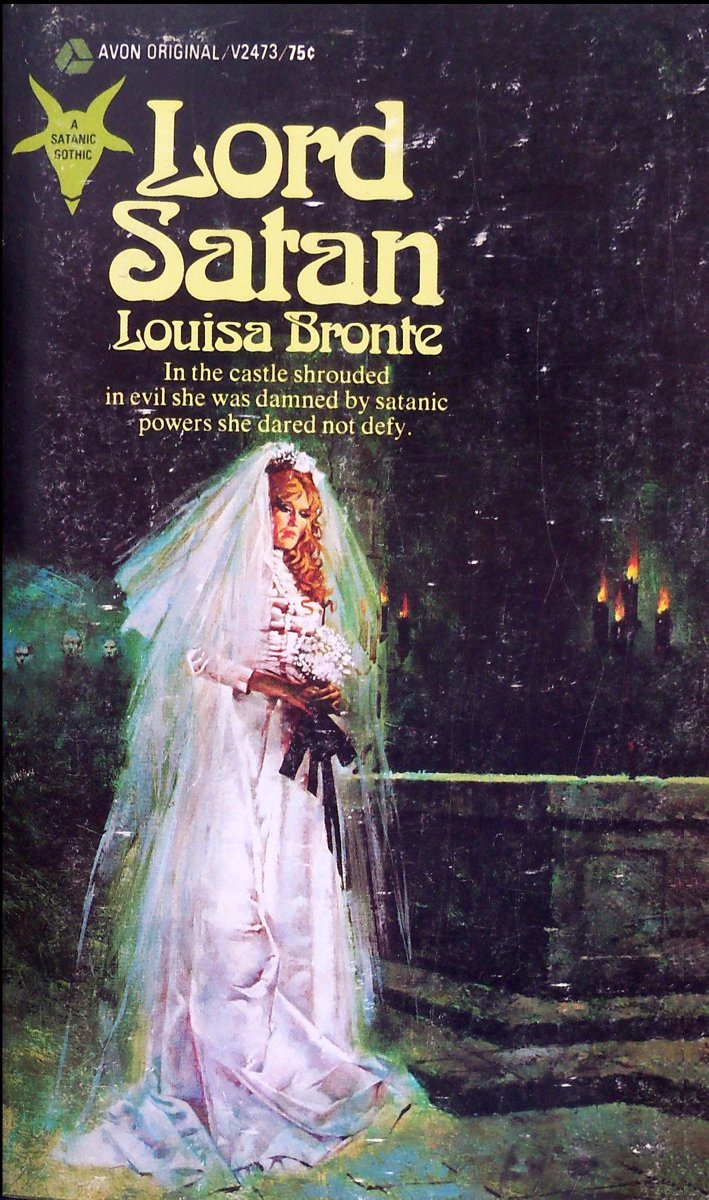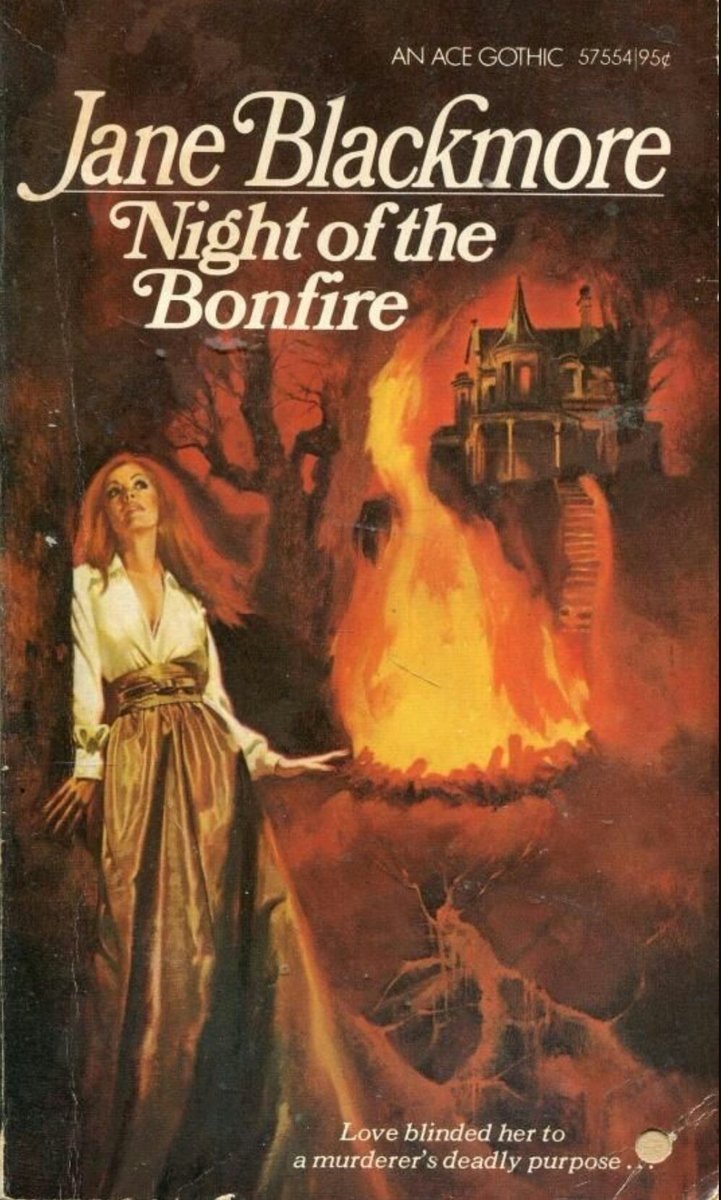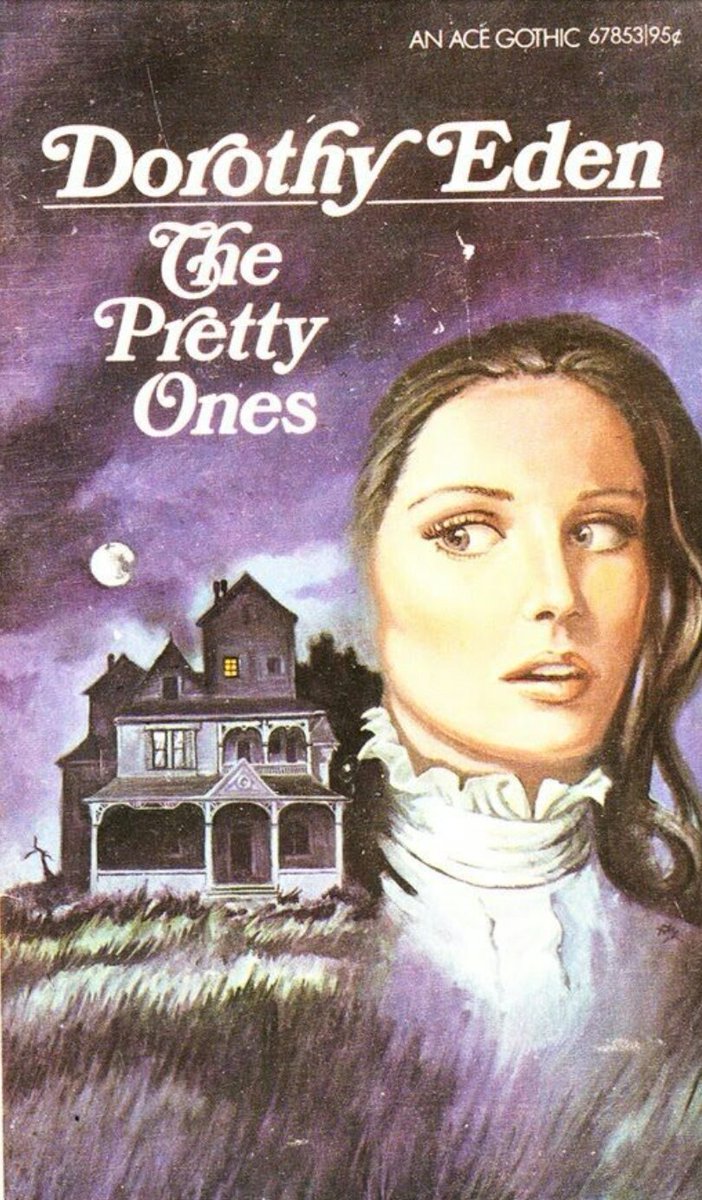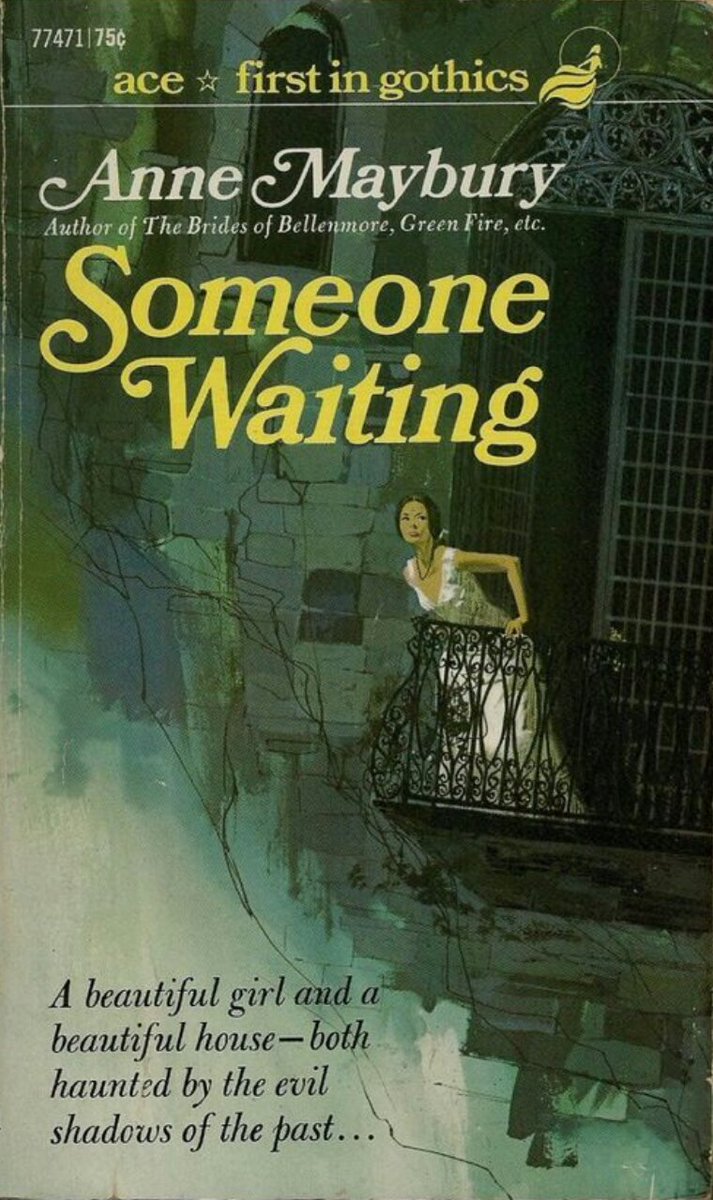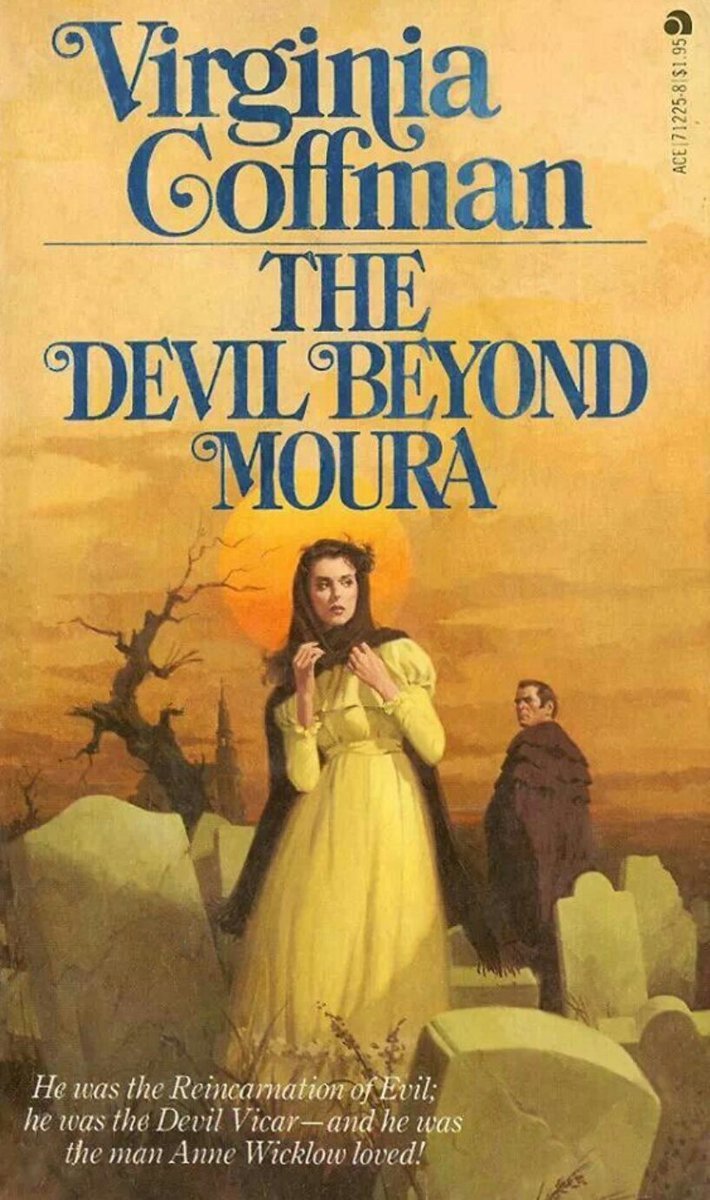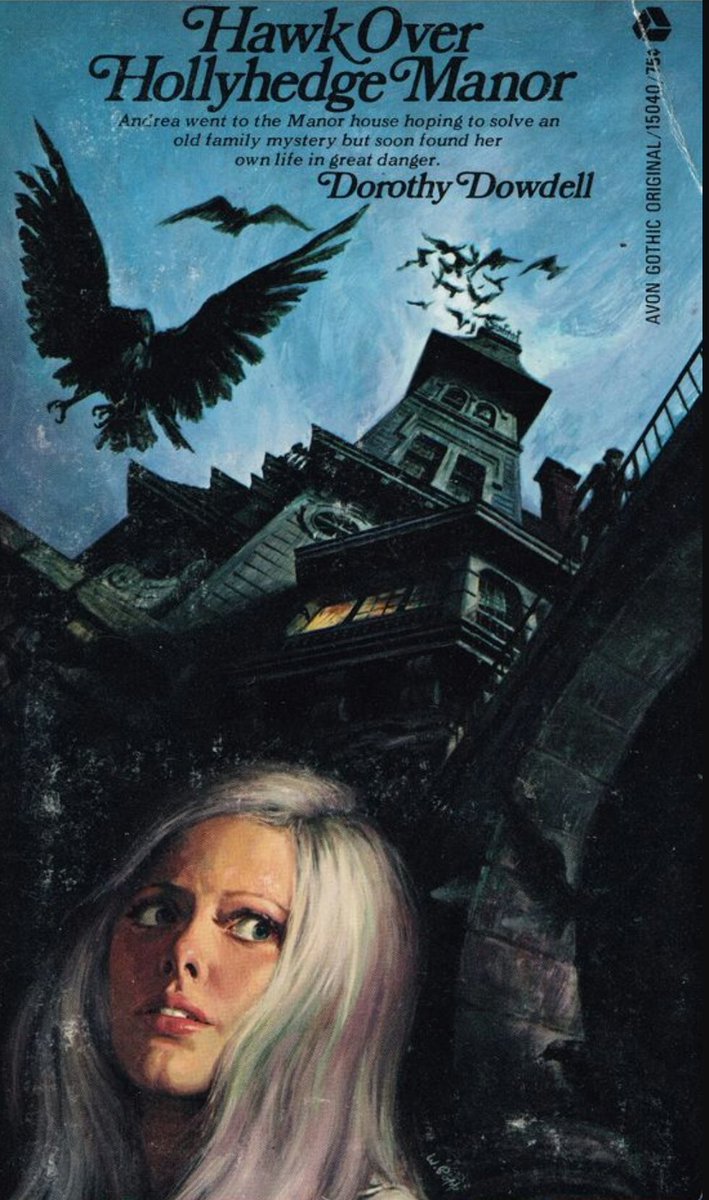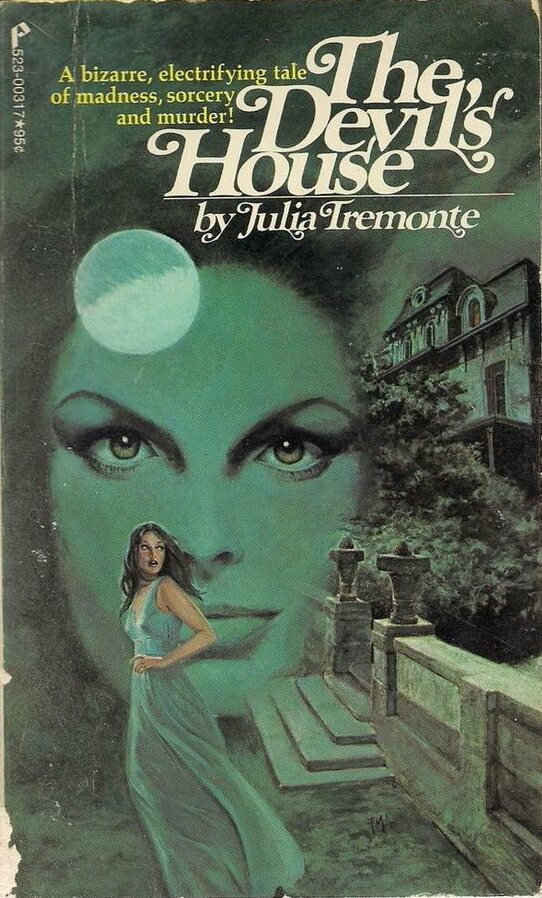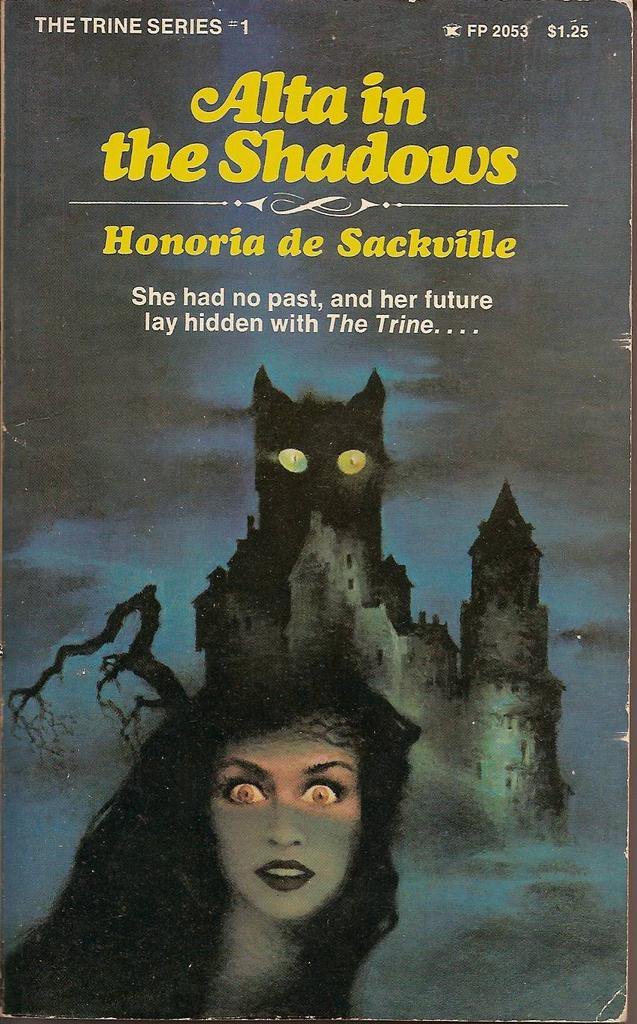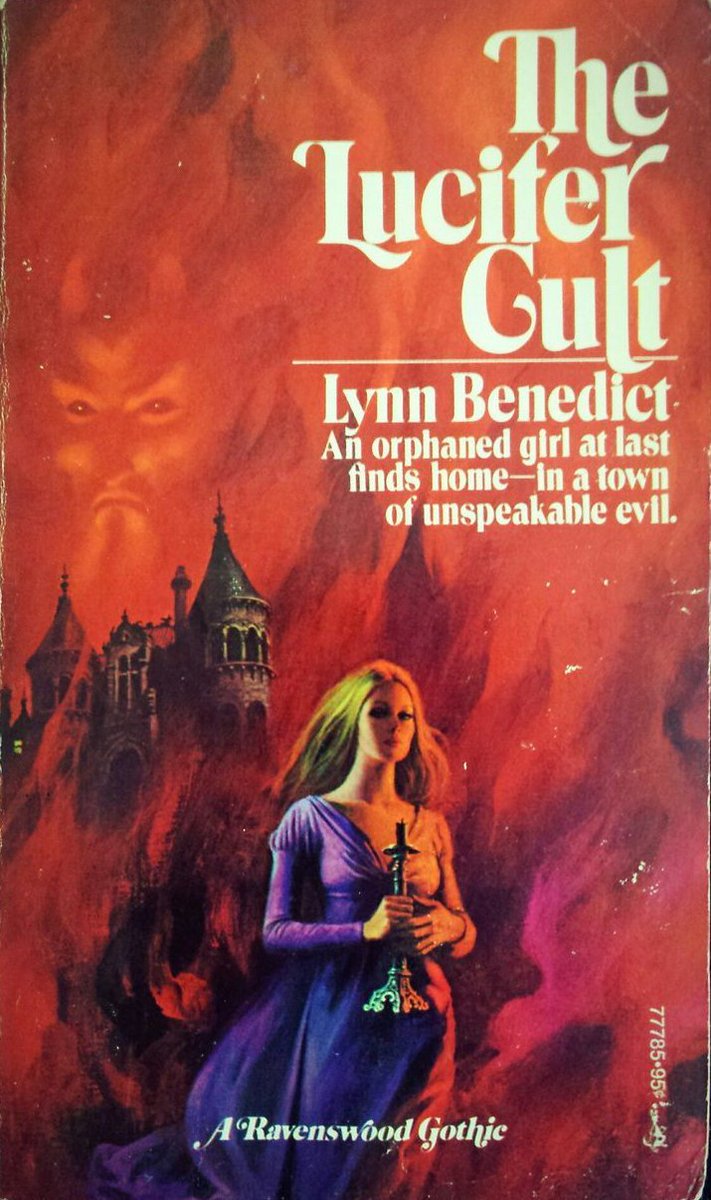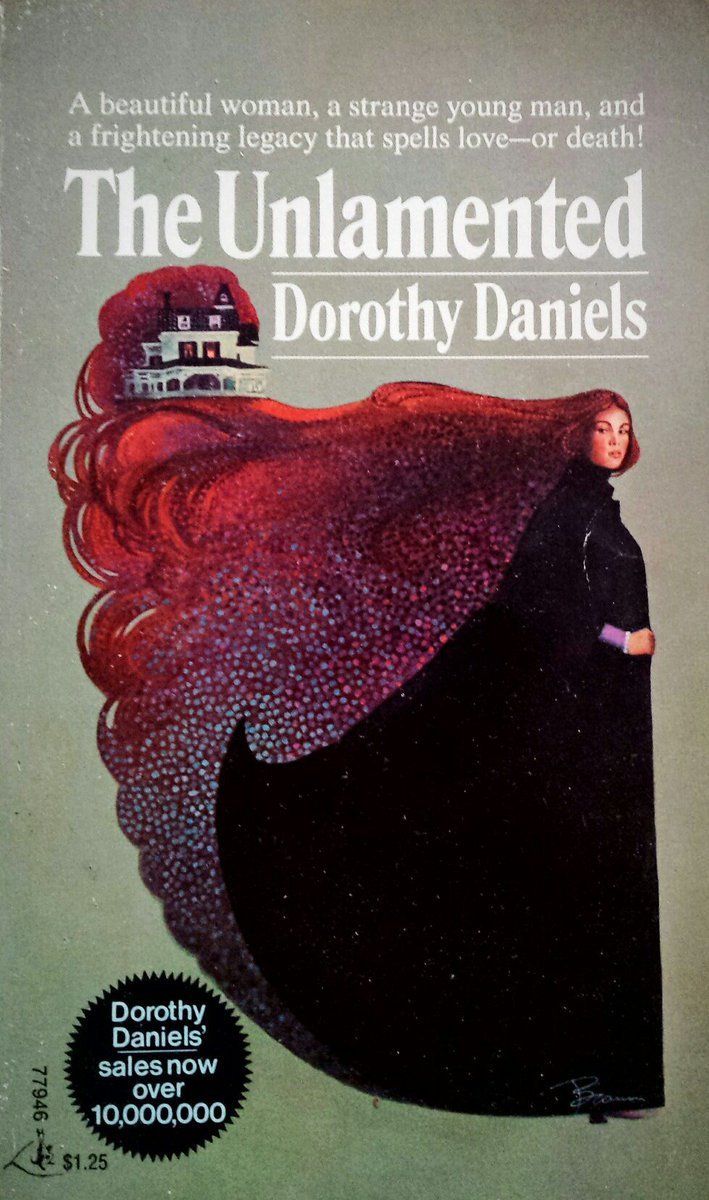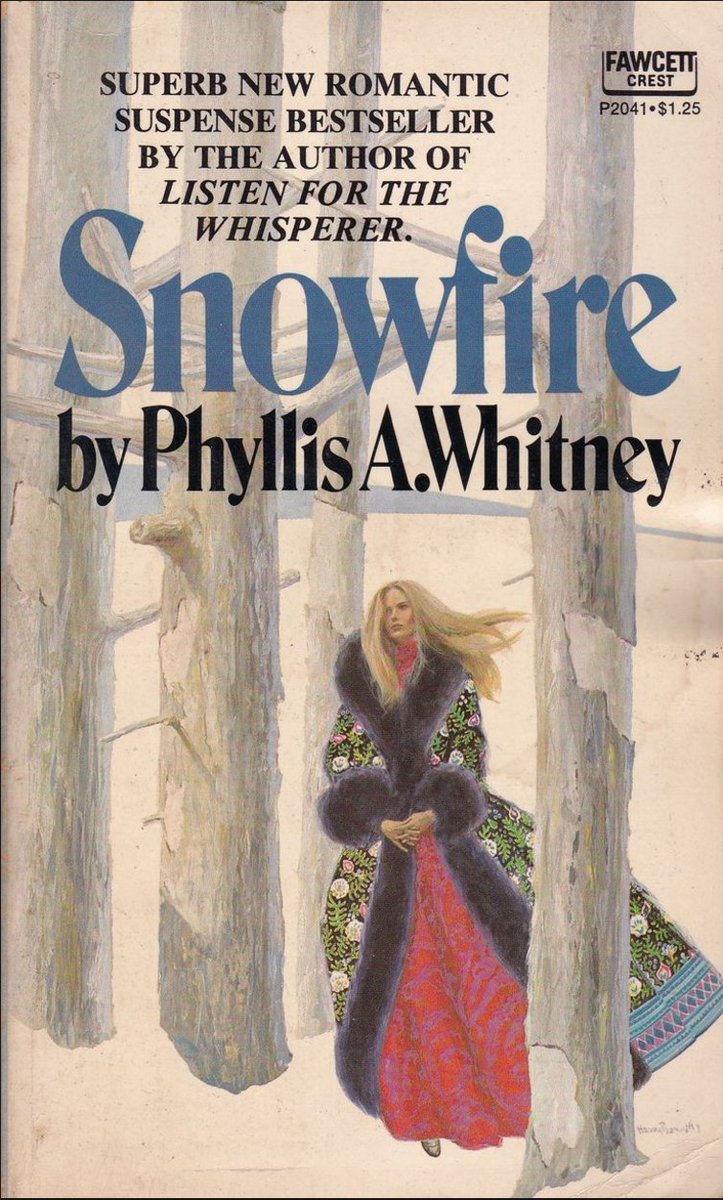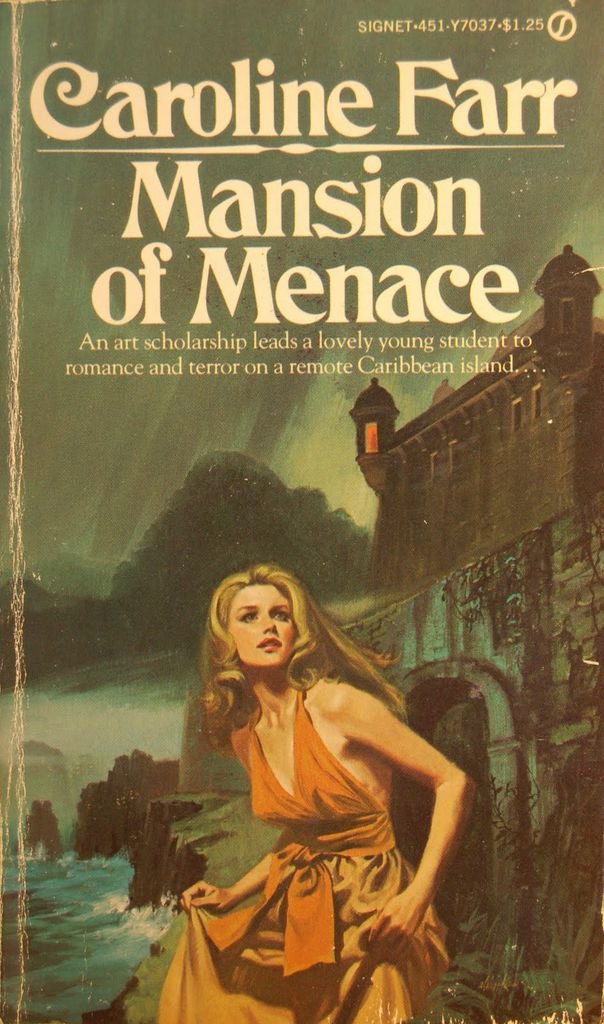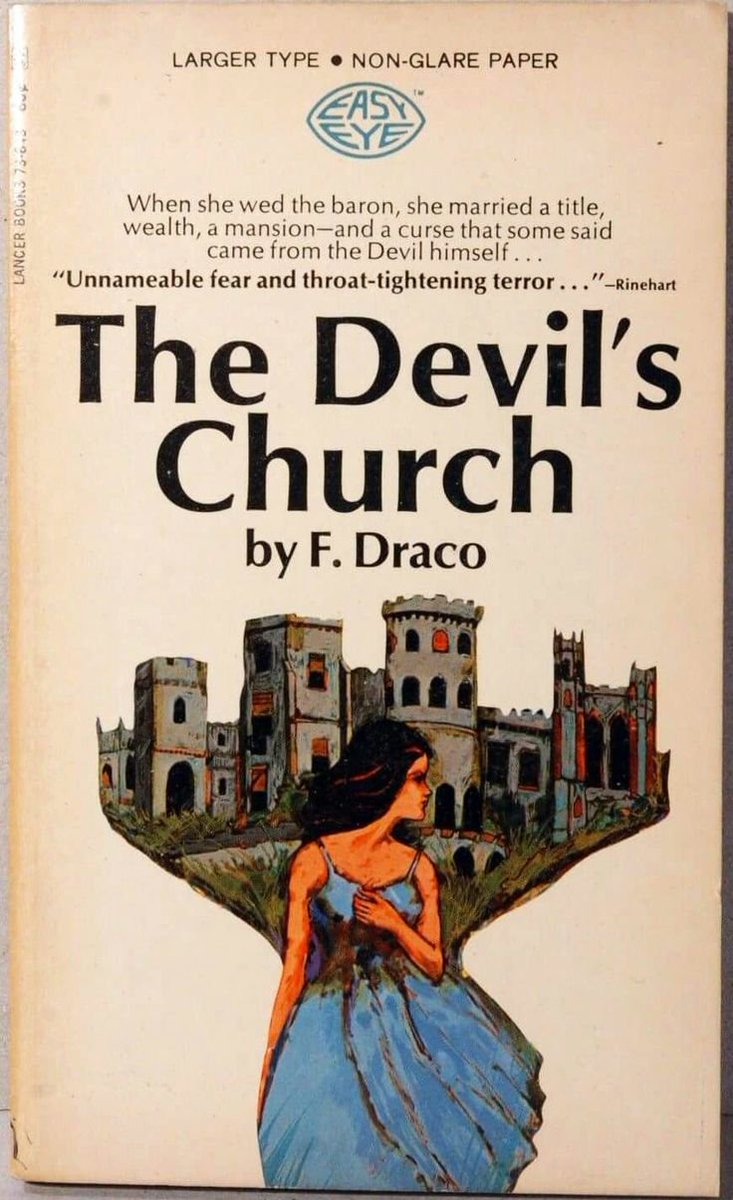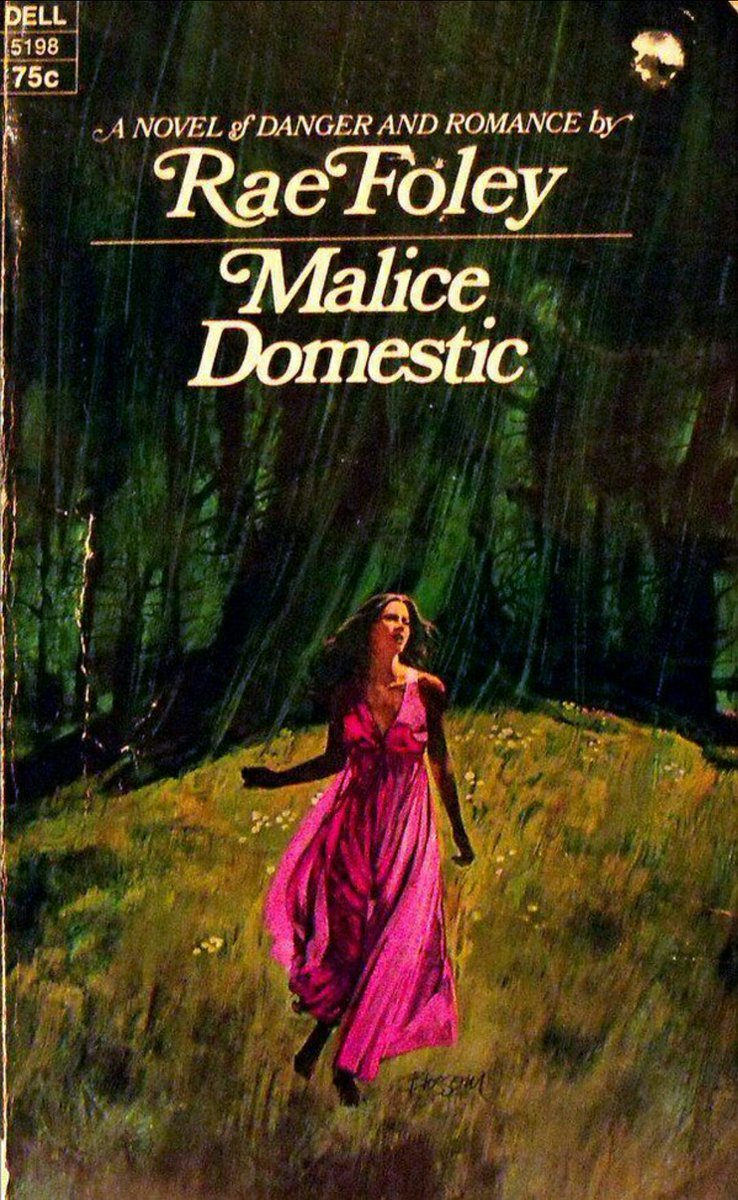Time once again for my occasional series "Women with great hair fleeing gothic houses!"
And today is a mega-thread of my 100 favourite gothic covers, in no particular order.
At #100: Ravenswood, by Janet Louise Roberts. Avon Books, 1971. I love this garden!
And today is a mega-thread of my 100 favourite gothic covers, in no particular order.
At #100: Ravenswood, by Janet Louise Roberts. Avon Books, 1971. I love this garden!
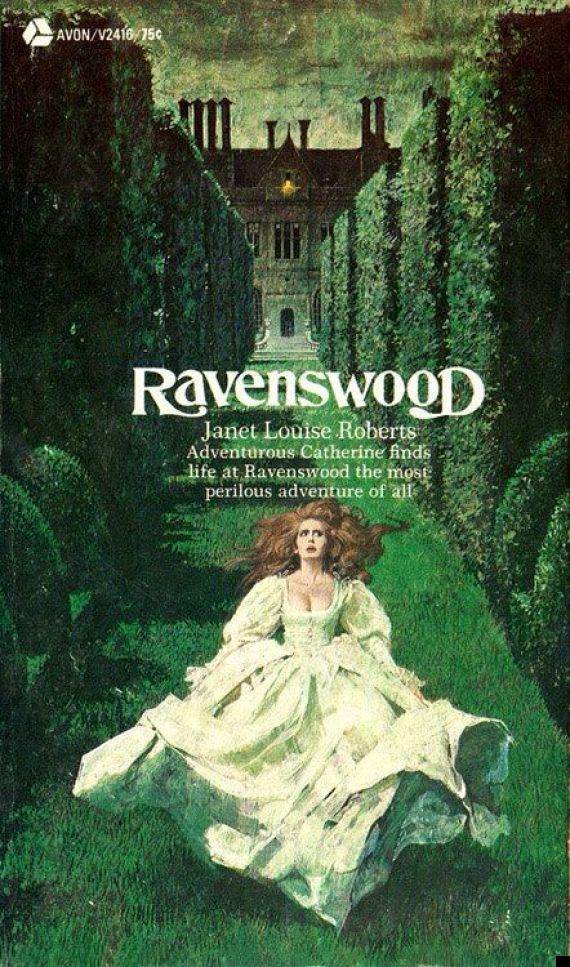
at #99: The Haunting of Drumroe, by Claudette Nicole. Fawcett Gold Medal, 1971.
Who says a gothic lady can't rock a white nightie in the snow?
Who says a gothic lady can't rock a white nightie in the snow?
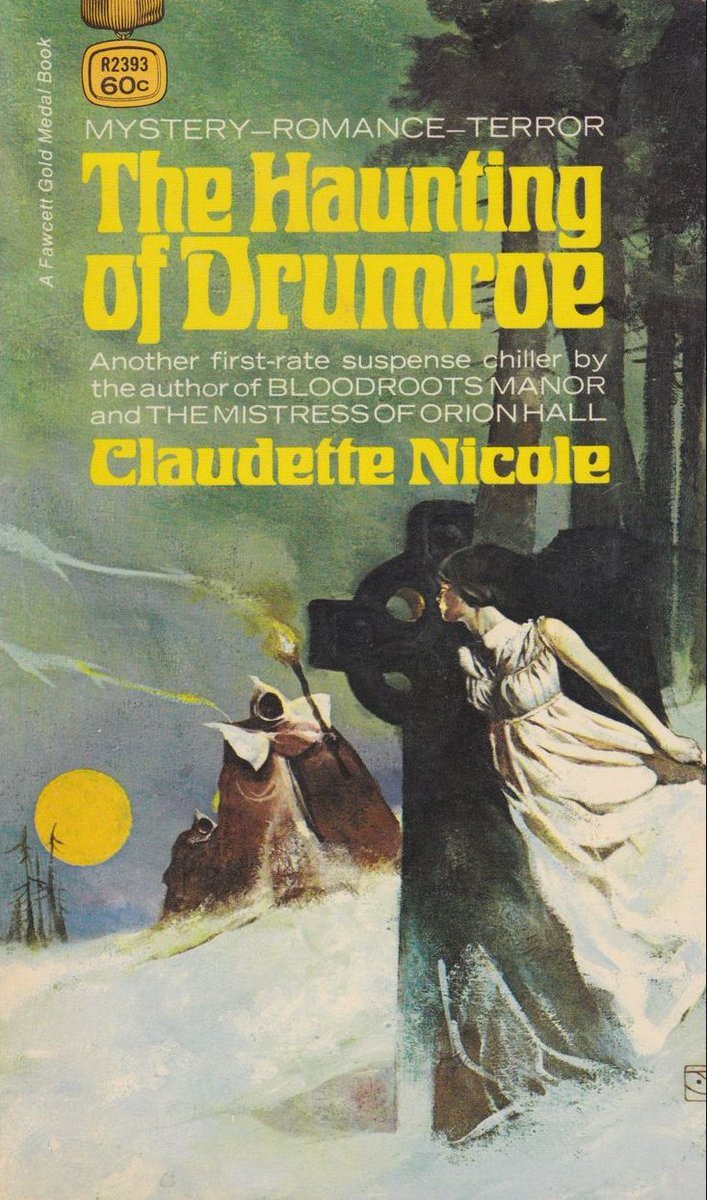
At #98: Bridge Of Fear, by Dorothy Eden. Ace Gothic, 1971.
Bookman Swash is the official font of gothic romance.
Bookman Swash is the official font of gothic romance.
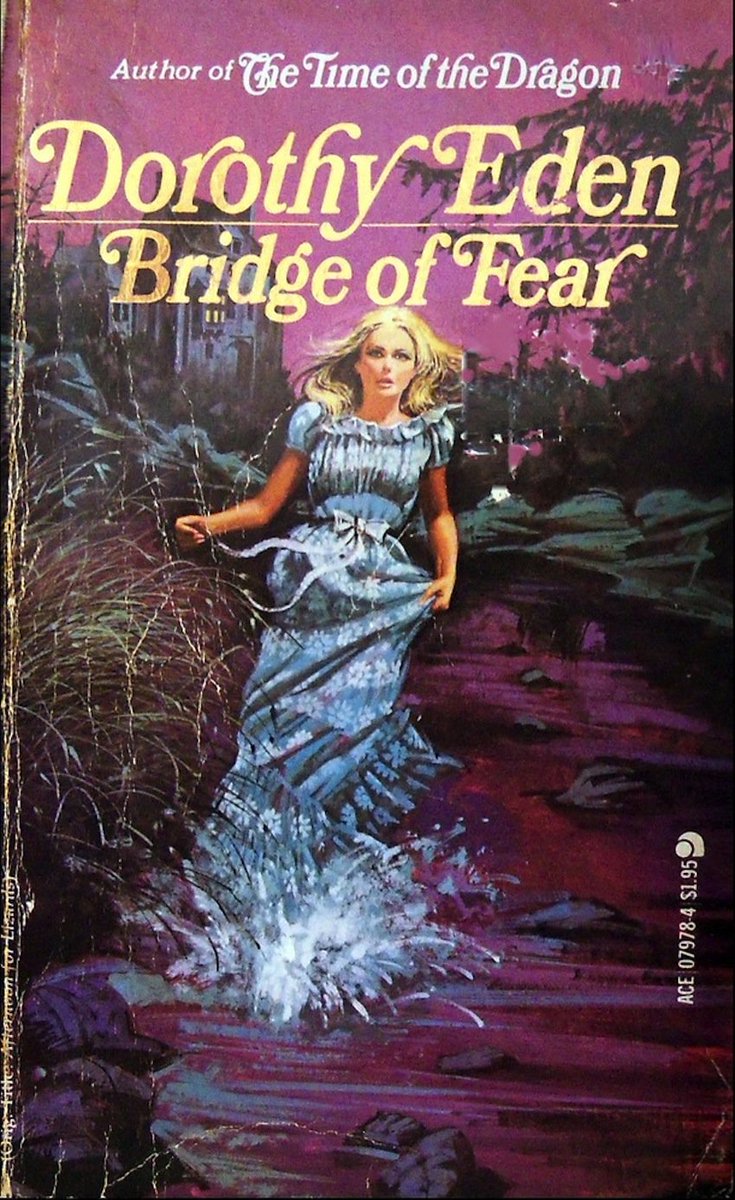
At #97: Madness At The Castle, by Susan Claudia. Signet Gothic, 1971.
Note this is a demon-haunted castle. No ghosts in this one...
Note this is a demon-haunted castle. No ghosts in this one...
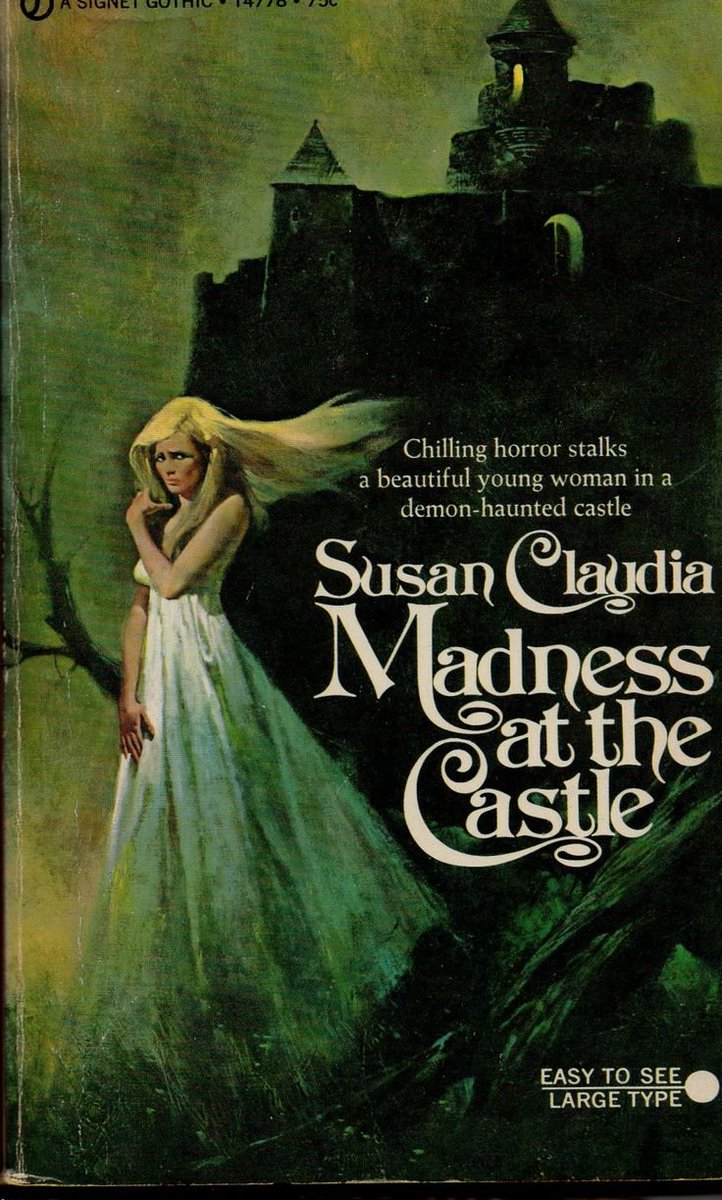
At #96: Terror On Duncan Island, by Caroline Farr. Signet Gothic, 1971. Cover by Allan Kass.
Note: this is a sea-circled island. None of your oxbow lake nonsense here.
Note: this is a sea-circled island. None of your oxbow lake nonsense here.
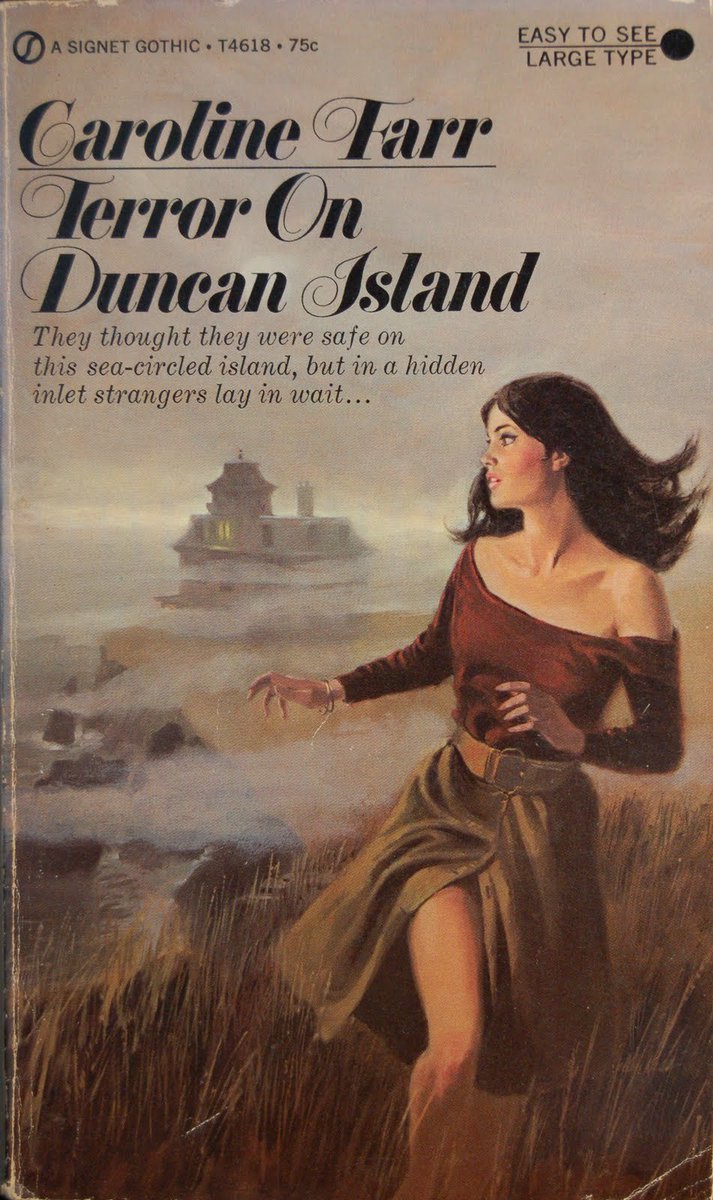
At #95: The Night Of The Enchantress, by Katherine Troy. Coronet Gothic, 1971. No single lit upper window in this one... 
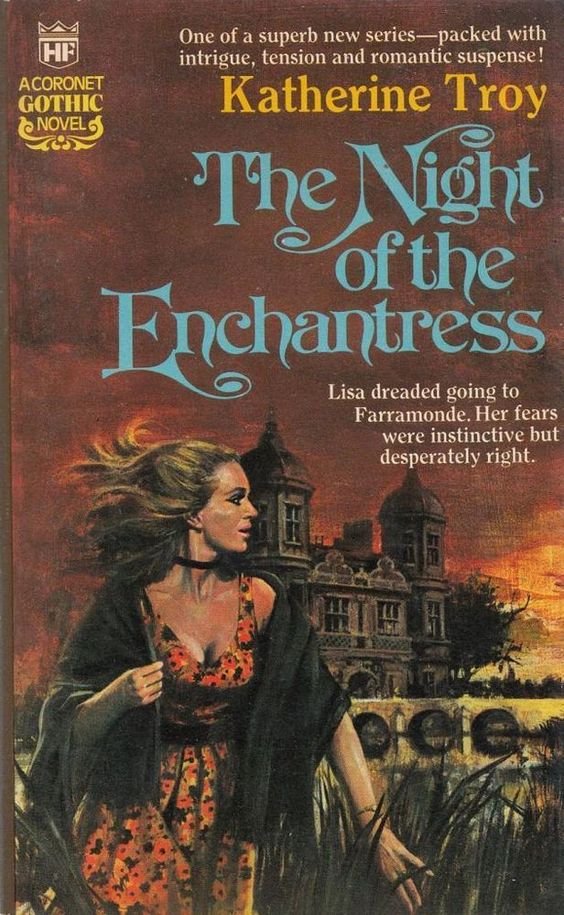
At #93: Seminar in Evil, by Daoma Winston. Lancer Easy-Eye Gothic, 1972. That's one for all you academics! 
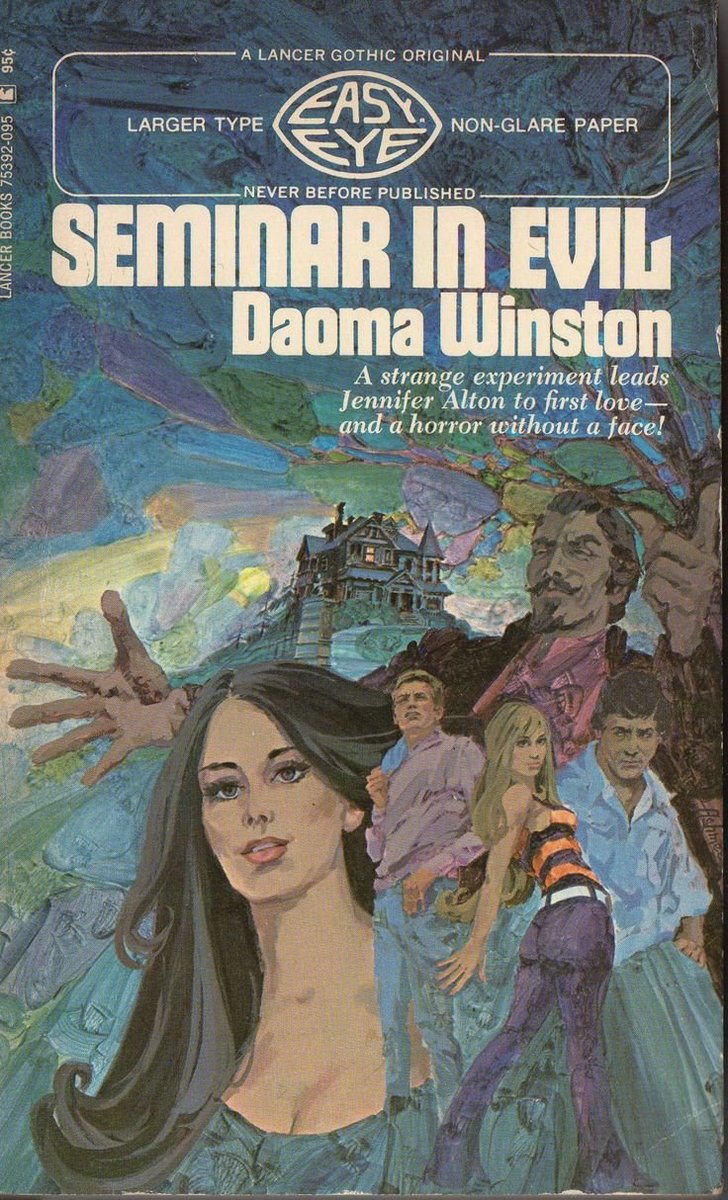
At #92: Face Of An Angel, by Dorothy Eden. Ace Gothic, 1972.
"Mary Paradise" is a strong nom de plume!
"Mary Paradise" is a strong nom de plume!
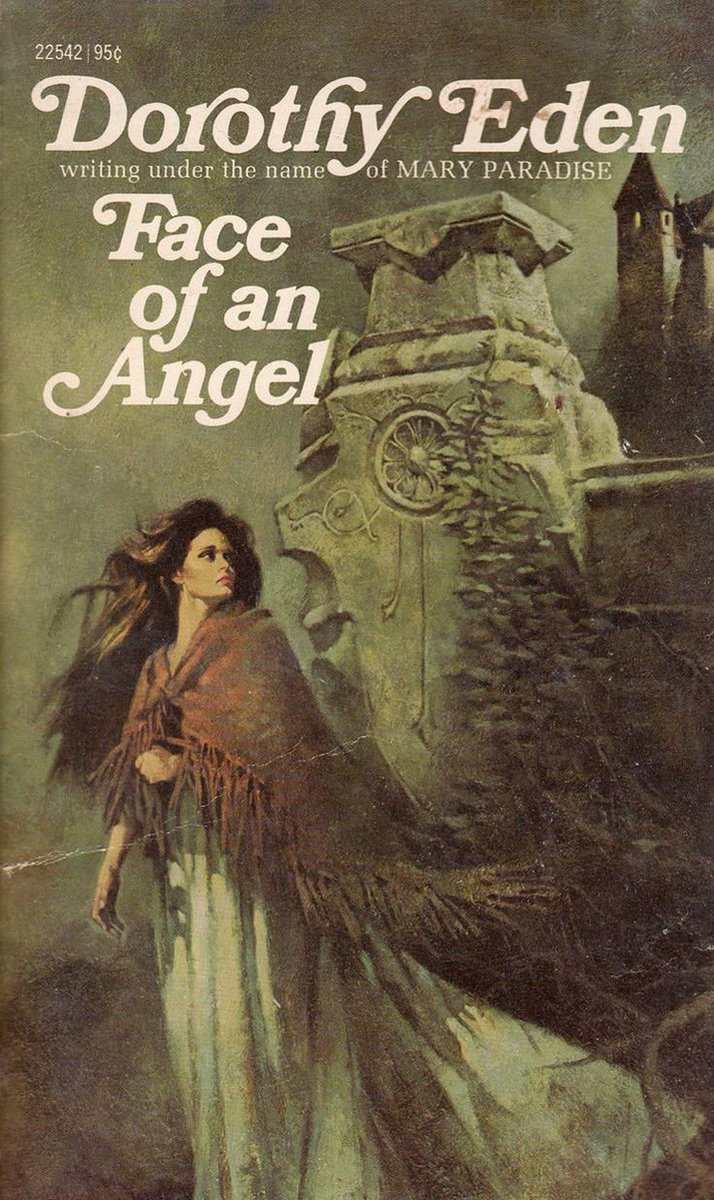
At #91: A Finger To Her Lips, by Evelyn Berckman. Dell Gothic, 1972. Cover by Lou Marchetti.
That's a lot of dress...
That's a lot of dress...

At #90: The Mark Of The Rope, by Miriam Lynch. Avon Satanic Gothic, 1972. When the title fits the author... 

At #89: Hornet's Nest, by Evelyn Bond. Avon Gothic Original, 1972 Cover by Walter Popp. May include bees as well. And the odd wasp. 
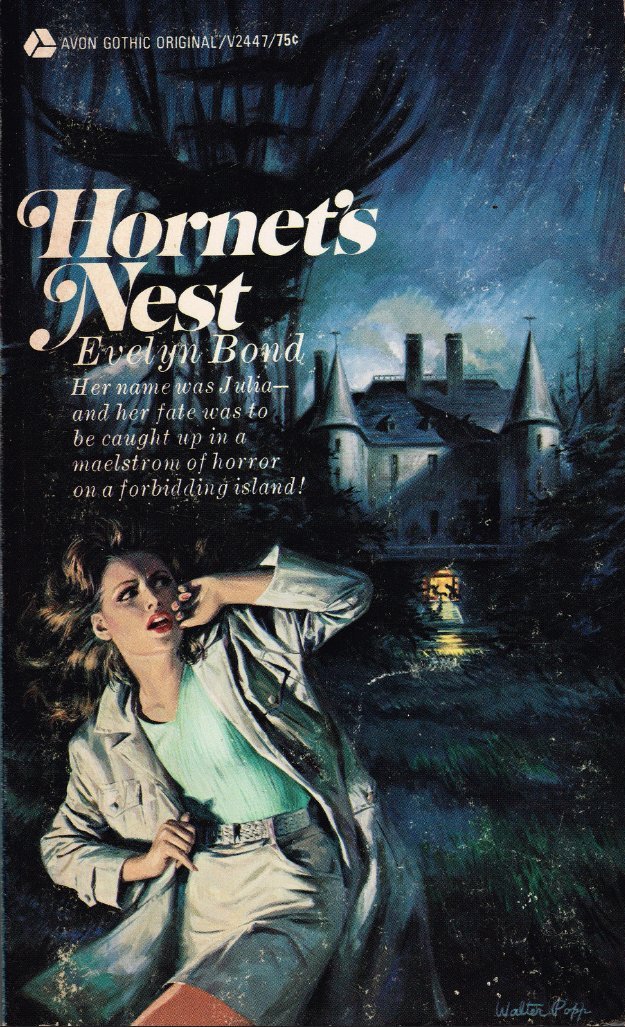
At #88: The Possession Of Elizabeth Calder, by Melissa Napier. Ravenswood Gothic, 1972.
Please don't judge a book by its cover font!
Please don't judge a book by its cover font!
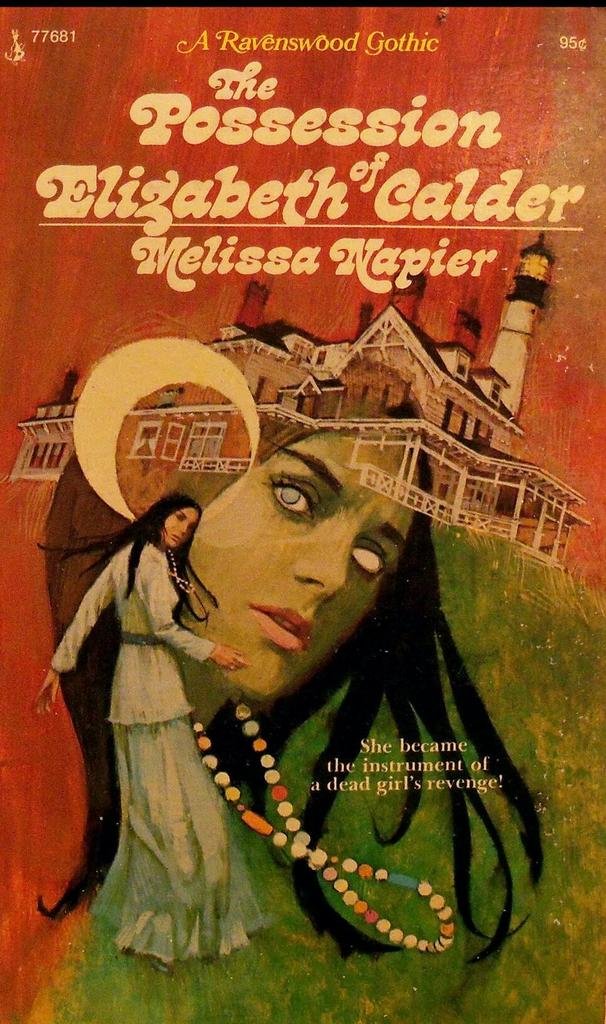
At #87: The Fortune Hunters, by Joan Aiken. Pocket Books, 1972. Joan getting the big billing there, and rightly so. 

At #84: Crow Hollow, by Dorothy Eden. Ace Gothic, 1967.
This is the correct dress to wear for winter fleeing.
This is the correct dress to wear for winter fleeing.
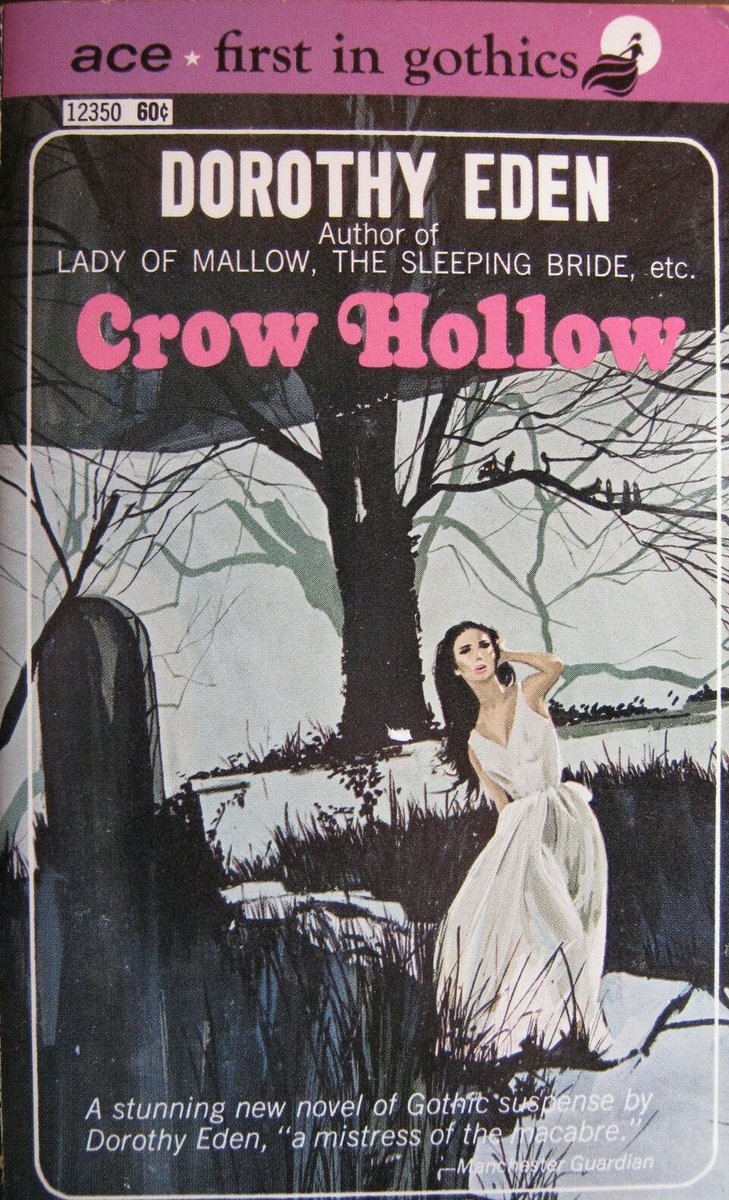
At #83: House of Illusion, by Nicola Devon. Ace Gothic, 1969.
Stop laughing at the back - they're trying to drive Jackie insane!
Stop laughing at the back - they're trying to drive Jackie insane!

At #82: The One-Faced Girl, by Charlotte Armstrong. Ace Gothic, 1969.
Lovely jagged rip effect on this cover.
Lovely jagged rip effect on this cover.
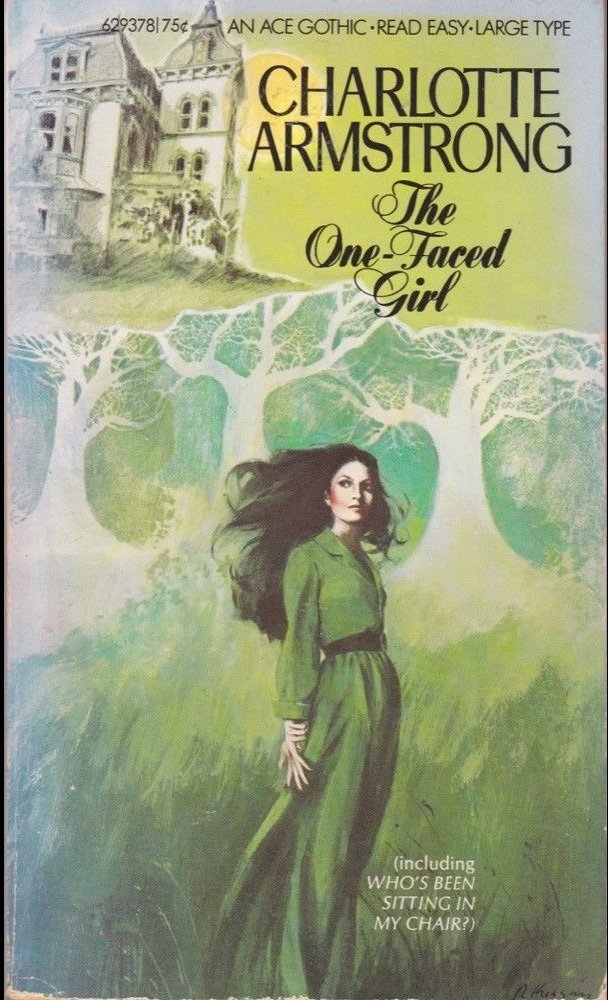
At #80: The Love Of Lucifer, by Daoma Winston. Ace Gothic, 1976.
"I lost my heart to a starship trooper..."
"I lost my heart to a starship trooper..."
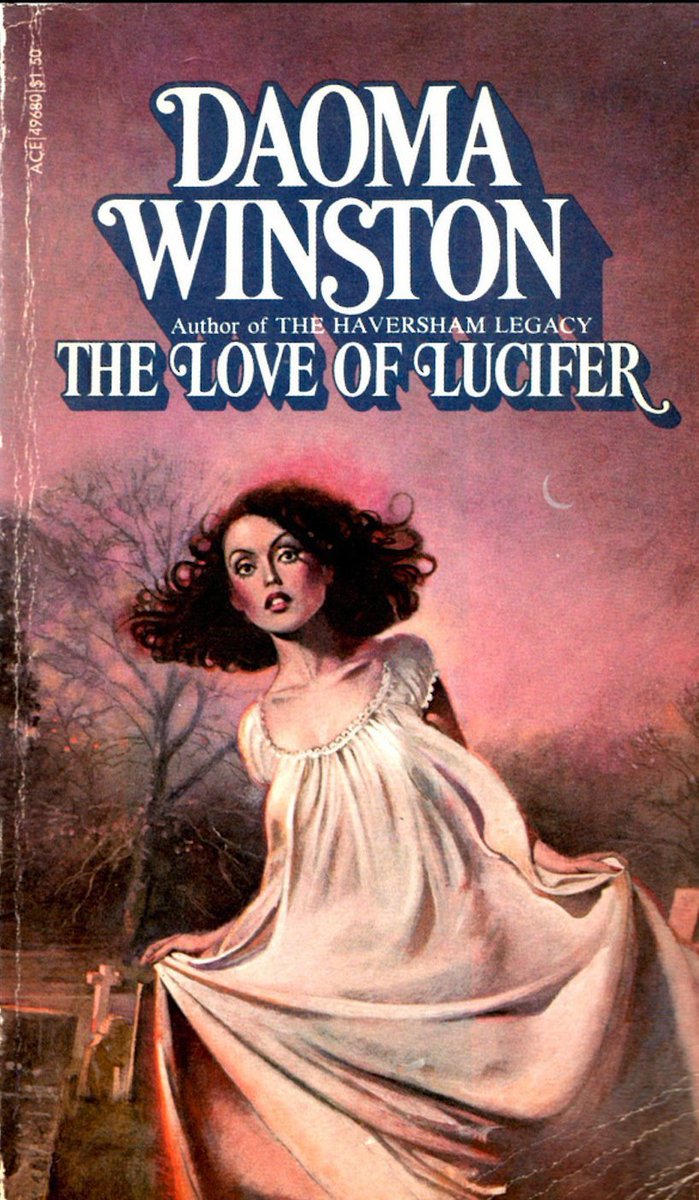
At #79: The Gilded Sarcophagus, by Charlotte Hunt. Ace Gothic, 1967.
"An evil older than time" is quite the metaphysical boast.
"An evil older than time" is quite the metaphysical boast.
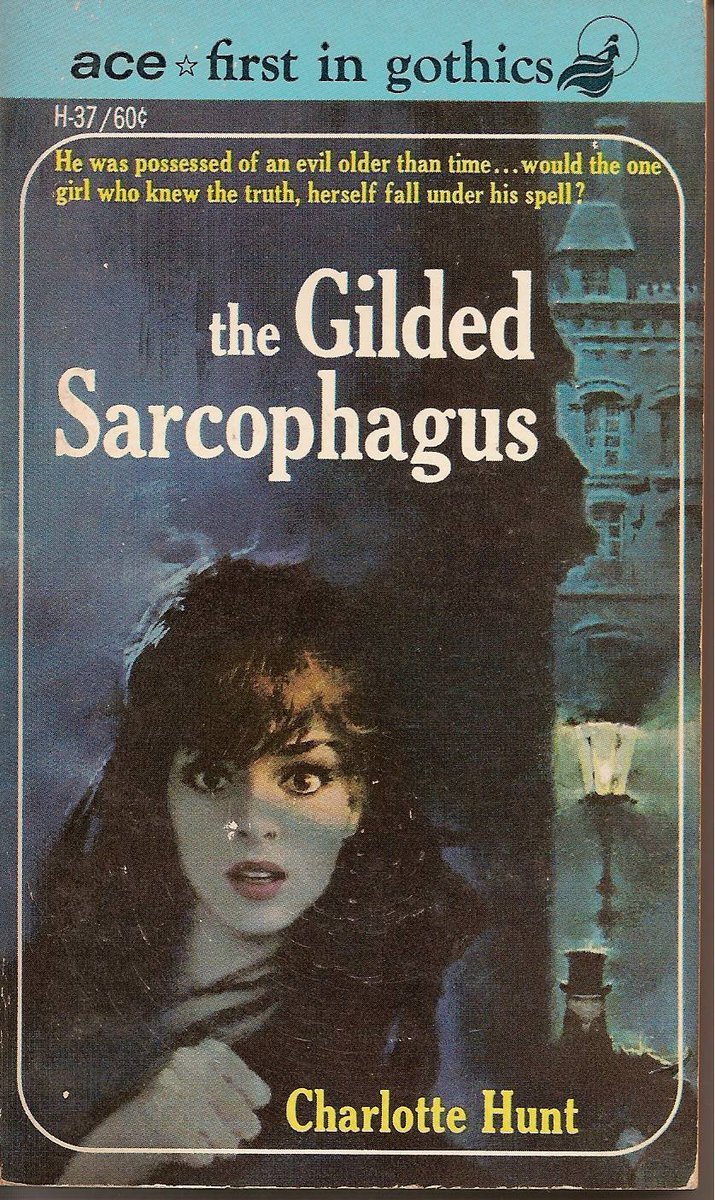
At #78: The Lute And The Glove, by Dorothy Eden. Ace Gothic, 1962.
Doppelgängers are just so gothic!
Doppelgängers are just so gothic!

At #77: Nightmare House, by Ethel Bowyer Martin. Ace Gothic, 1975.
This is a perfect example of the Gothic Flounce by the way.
This is a perfect example of the Gothic Flounce by the way.
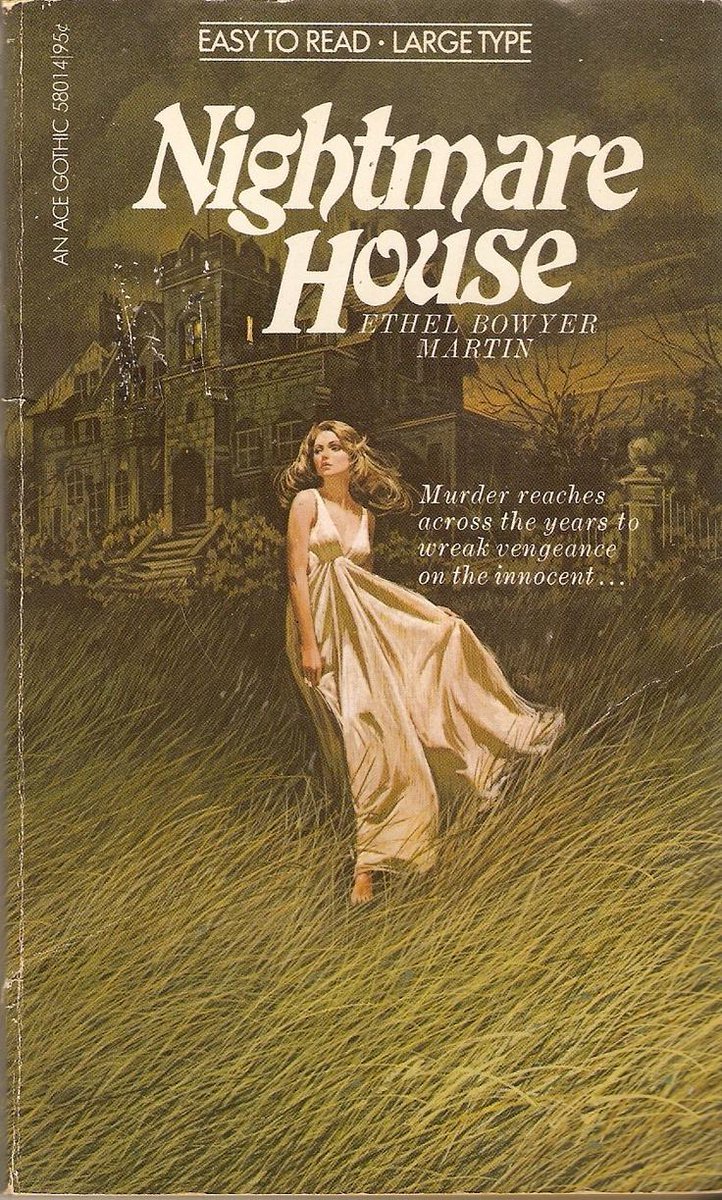
At #76: The Brooding Lake, by Dorothy Eden. Ace Gothic, 1966. If you're new to gothic romances do start with Dorothy Eden. You won't regret it. 
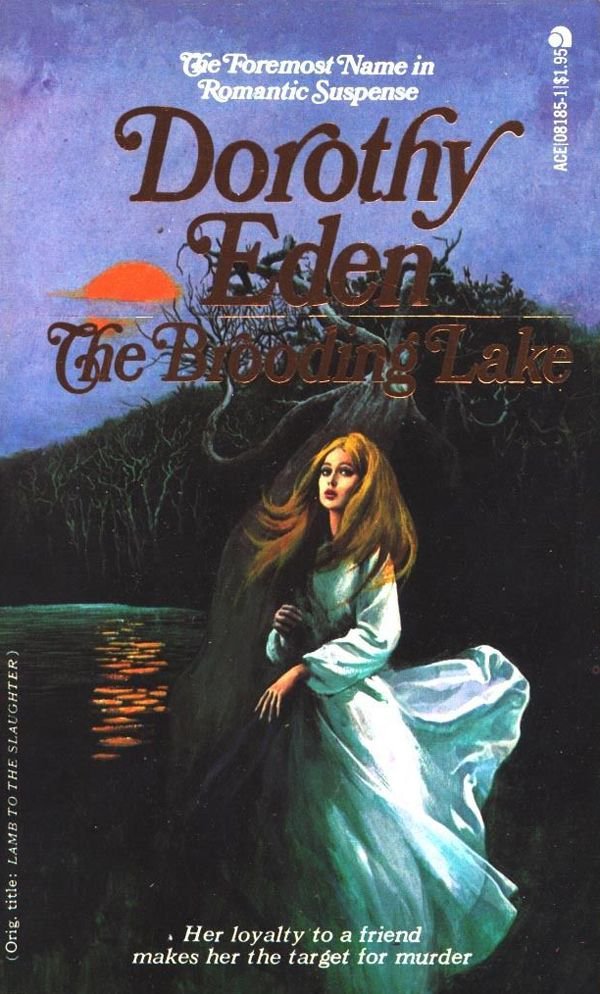
At #74: Picture Of Death, by Diane Lapoint. Ace Gothic, 1975. Beachfront gothic is a kind of sub-genre with its own rules... 

At #72: House Of Dark Laughter, by Melissa Napier. Avon Gothic Original, 1972. This is a traditional late-night fleeing cover. 
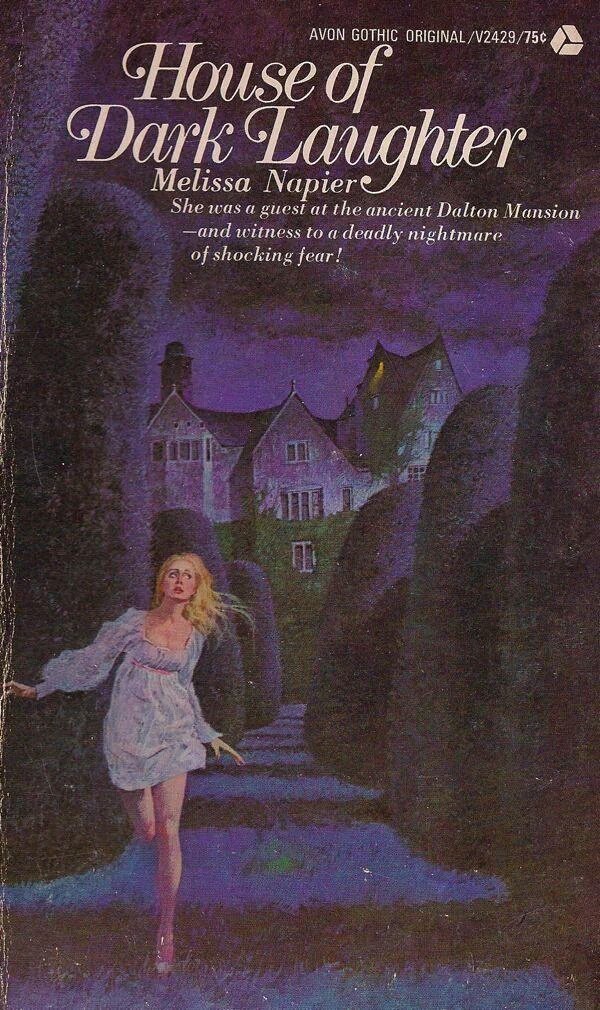
At #71: Dark Cypress, by Edwina Noone (aka Michael Avallone). Ace Gothic, 1975.
He also wrote the novelisations of Planet of the Apes and the Cannonball Run you know!
He also wrote the novelisations of Planet of the Apes and the Cannonball Run you know!
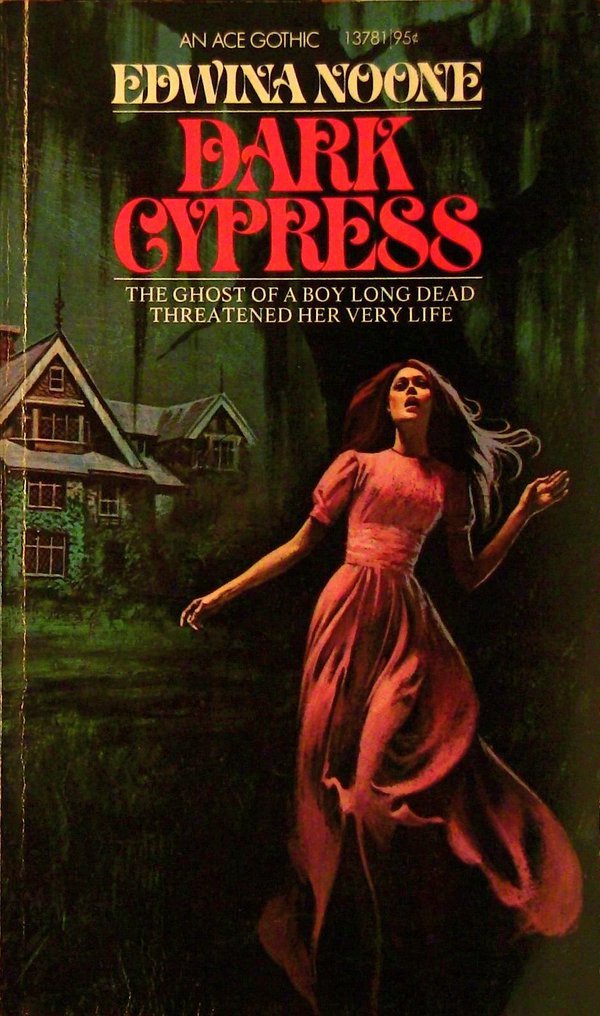
At #70: Dark Towers Of Fog Island by Marilyn Ross. Popular Library, 1975.
No, that's not Gillian Anderson...
No, that's not Gillian Anderson...
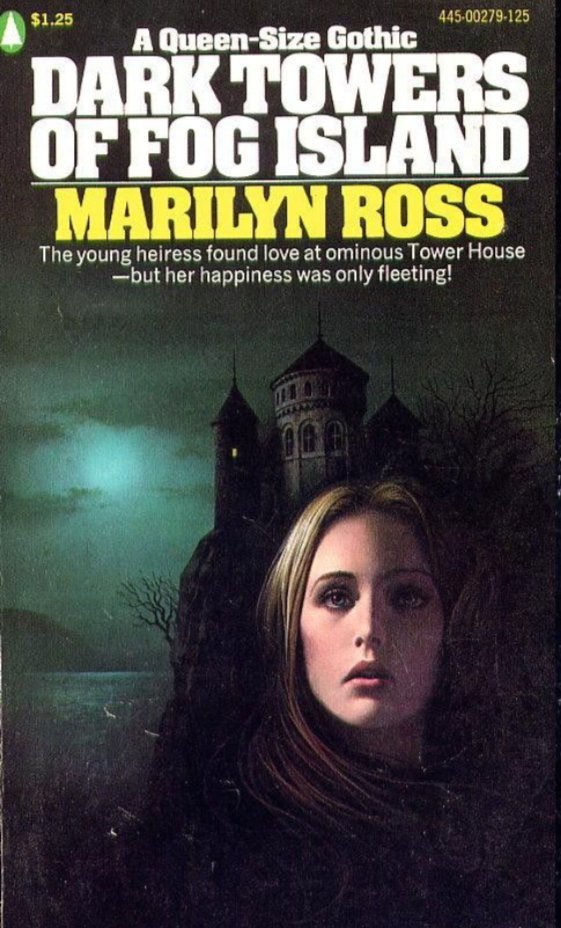
At #69: House Of The Darkest Death, by Alicia Grace. Lancer Easy-Eye Gothic, 1971. Cover by Walter Popp.
I see death is all a-quiver...
I see death is all a-quiver...
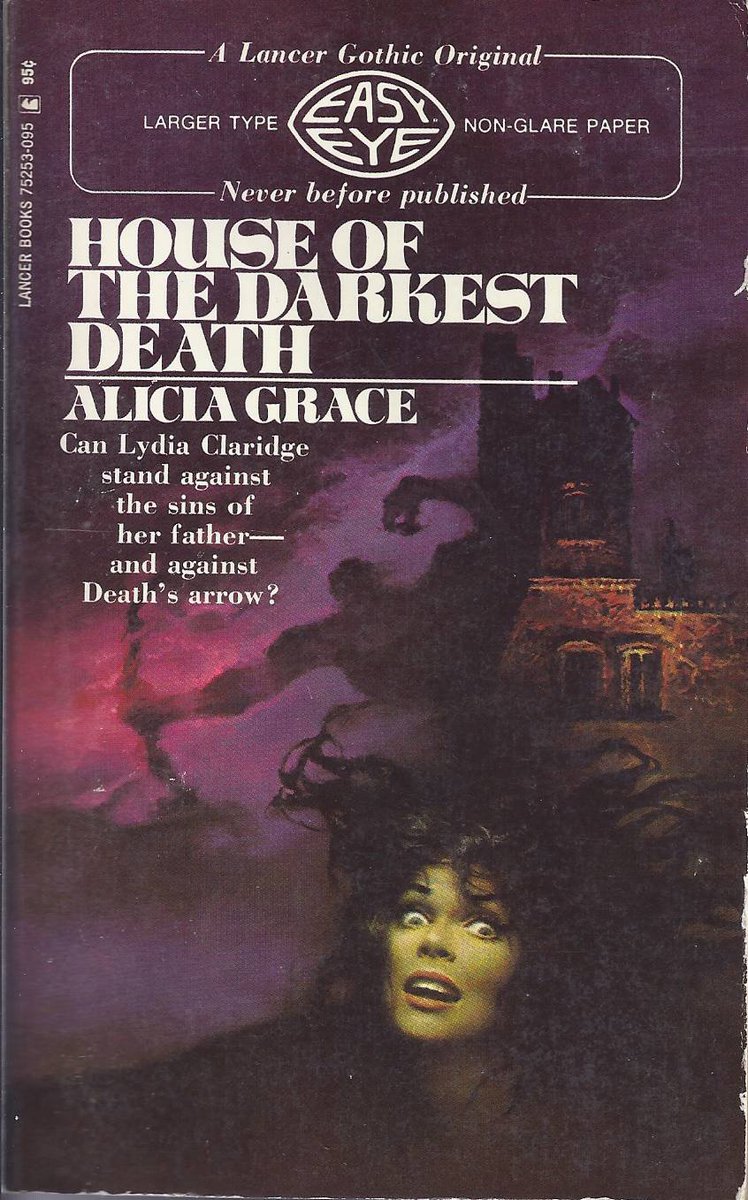
At #68: The Dark Gondola, by Virginia Coffman. Ace Gothic, 1973. Fun fact: by law all Venitian gondolas are black. By tradition all gondoliers are also communists. 
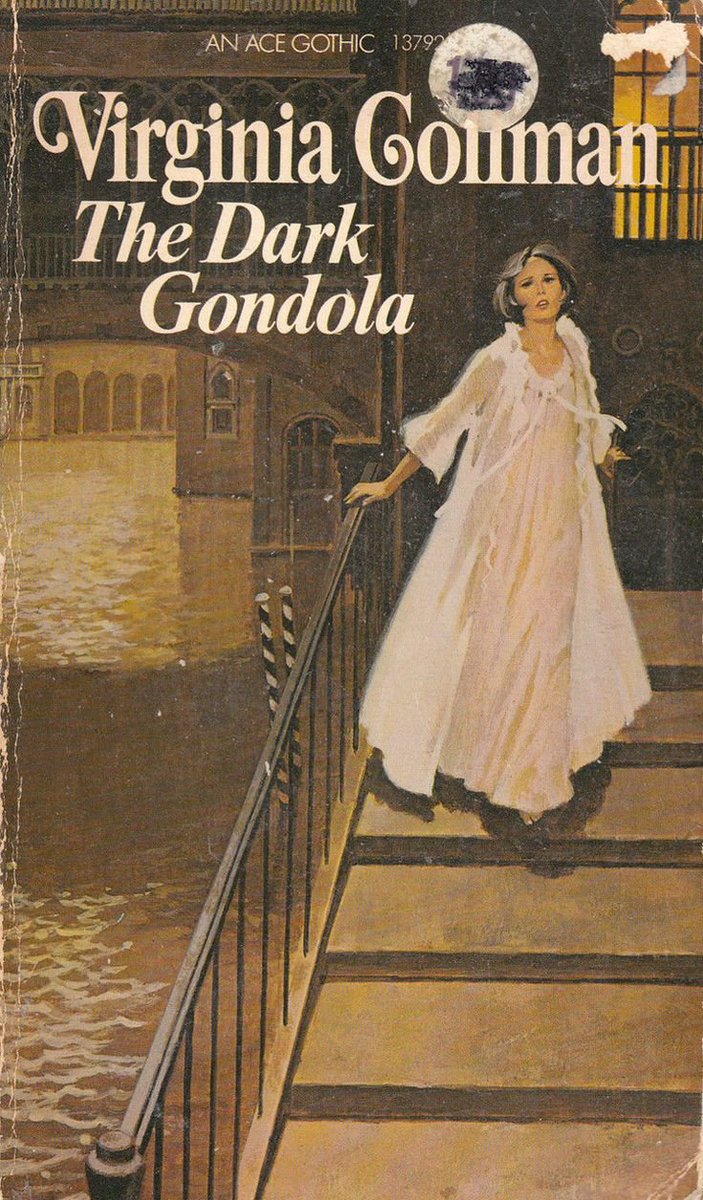
At #67: The 13th Doll, by Ann Loring. Avon Gothic Original, 1973. Cover art by Walter Popp. Another beachfront gothic... 

At #66: Three Women In The House, by Estelle Thompson. Avon Gothic Original, 1973. Has the makings of a great, if gruesome, sit com. 

At #65: The House Of Counted Hatreds, by Susan Jennifer. Avon Gothic, 1973. Art by Walter Popp. A house designed by MC Escher is hard to flee. 
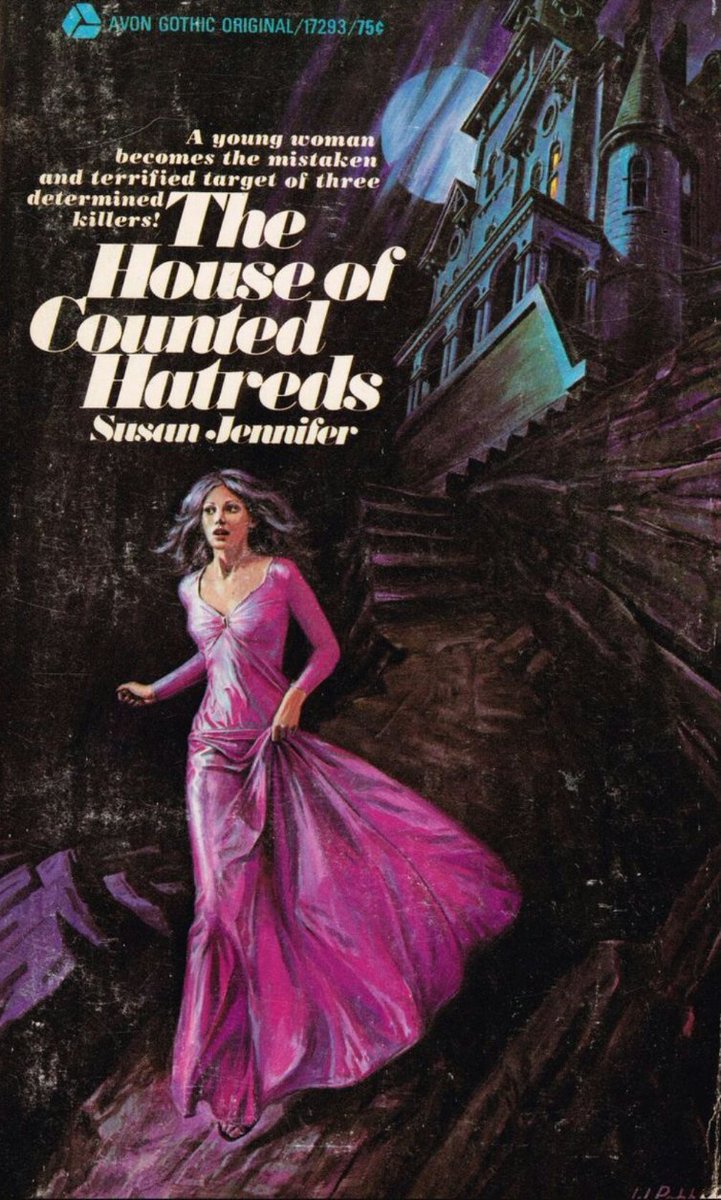
At #64: The Secret Of Chateau Laval*, by Susan Marvin. Avon Gothic, 1973.
(*40% Merlot, 59% Syrah, 1% LSD)
(*40% Merlot, 59% Syrah, 1% LSD)
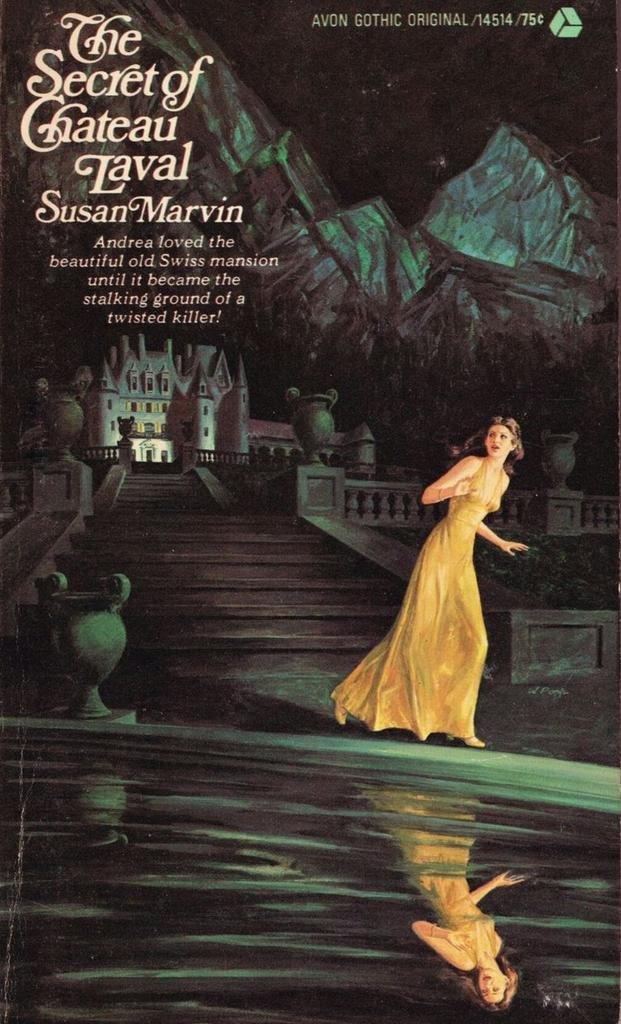
At #62: Crucible of Evil, by Lyda Belknap Long. Avon Gothic Original, 1974. Cover art by Walter Popp. Not really a gothic romance, but still a fun read. 
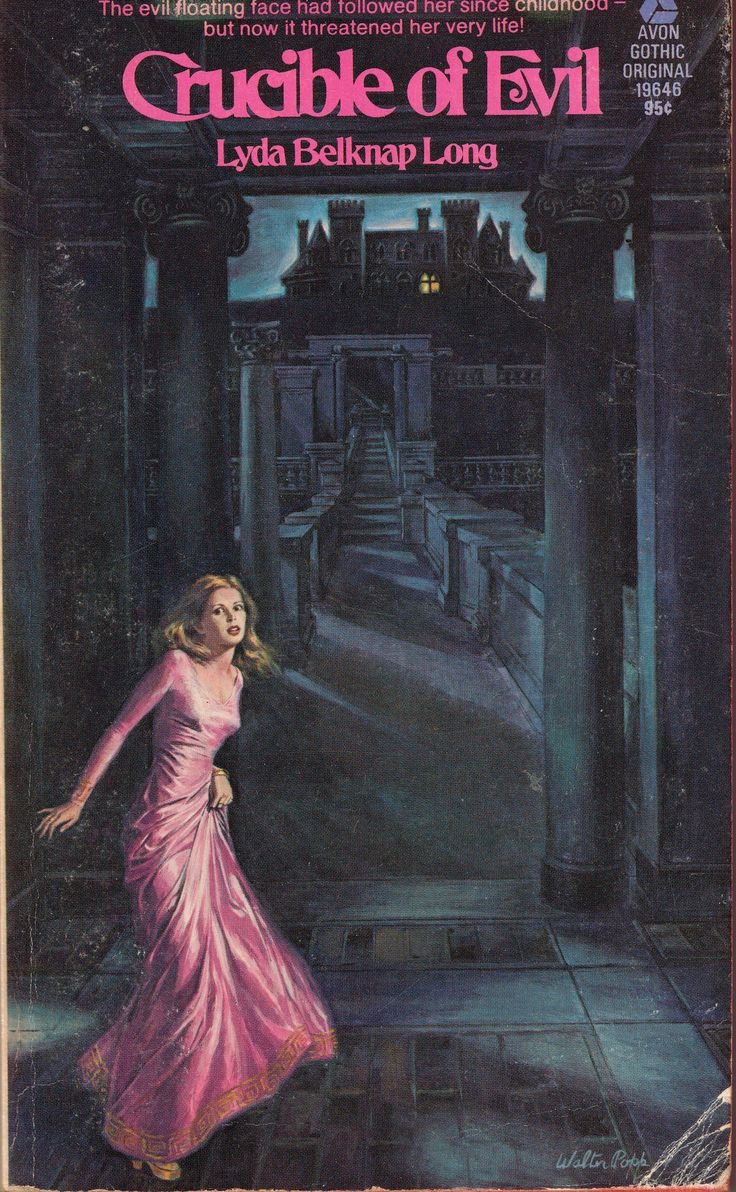
At #61: The Three Sisters of No End House, by Mona Farnsworth. ACE gothic, 1972.
The house appears to be in a pool of algae...
The house appears to be in a pool of algae...

At #60: A Gathering Of Moondust, by Patricia Morton. Lancer Gothic, 1965. Cover by Lou Marchetti. Quite a professional outfit for fleeing in. I like it! 
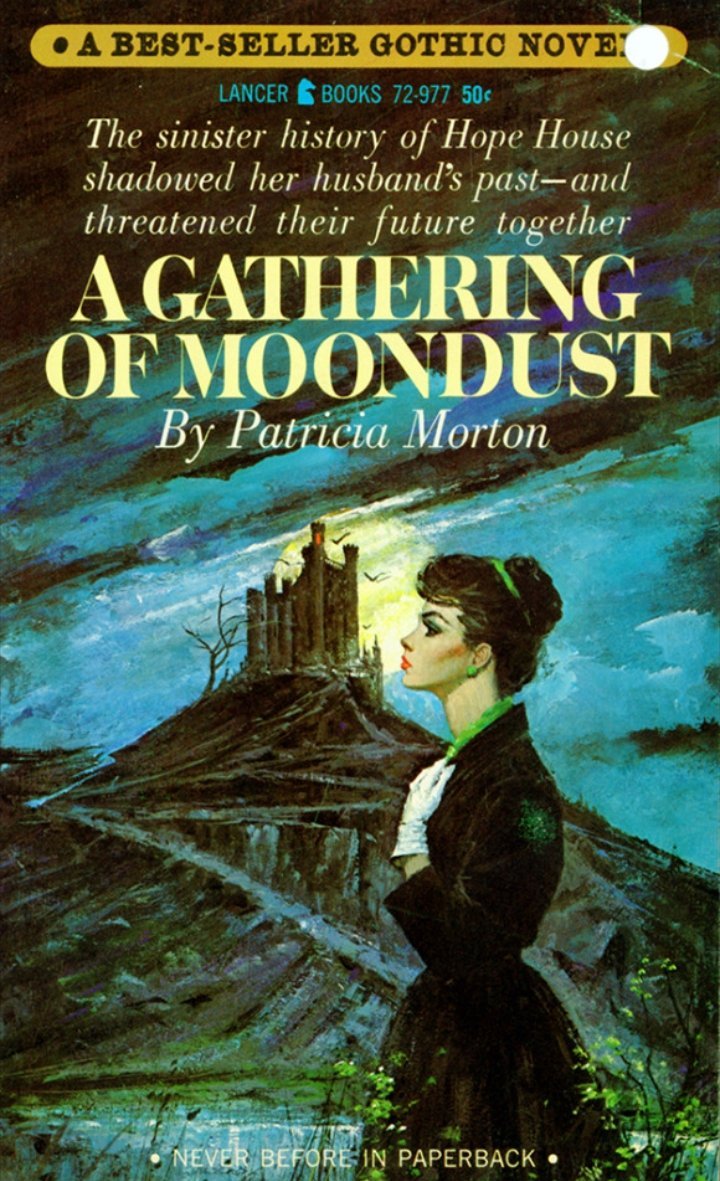
At #59: Thunder Heights, by Phyllis A Whitney. Ace Gothic, 1960. Cover by Lou Marchetti. This is a great novel if you're looking for your next gothic read. 

At #58: Cloud Over Calderwood, by Kathleen A Shoesmith. Ace Gothic, 1973. That's actually quite a scary cover. 
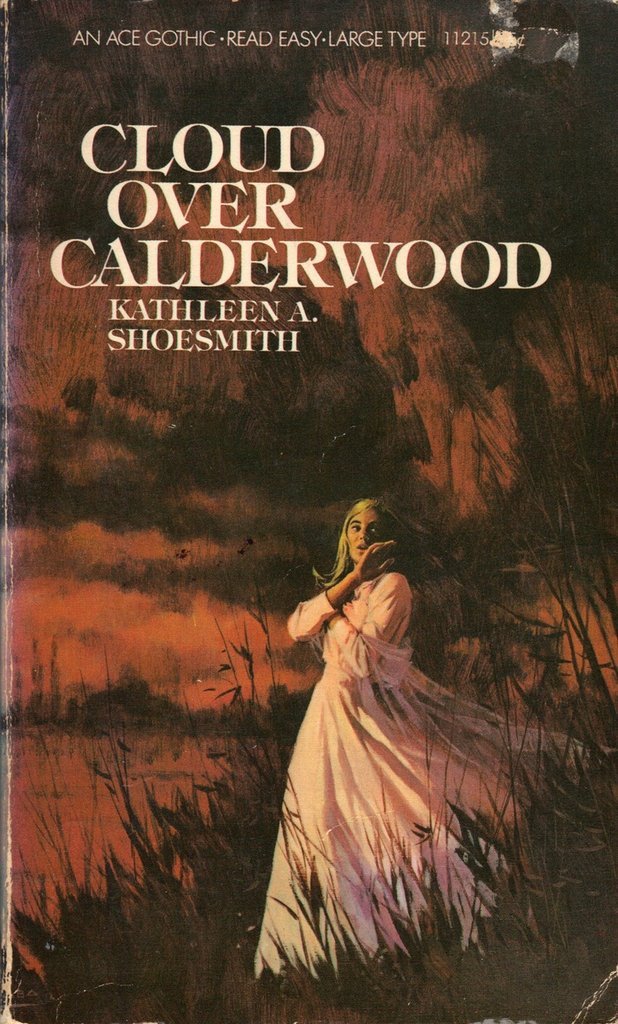
At #57: Vengeance Of The Cat Goddess, by Jennifer Stephens. Avon Satanic Gothic, 1973.
Well you wanted a cat...
Well you wanted a cat...

At #56: To Kill A House, by Suzanne Roberts. Lancer Gothic, 1973. Cover by George Ziel.
"Never before published" was to assure readers this wasn't a reprint with a changed title.
"Never before published" was to assure readers this wasn't a reprint with a changed title.

At #55: Somewhere Within This House, by Jean Francis Webb. Popular Library, 1973.
Ah yes, old Gothic Hawaii...
Ah yes, old Gothic Hawaii...
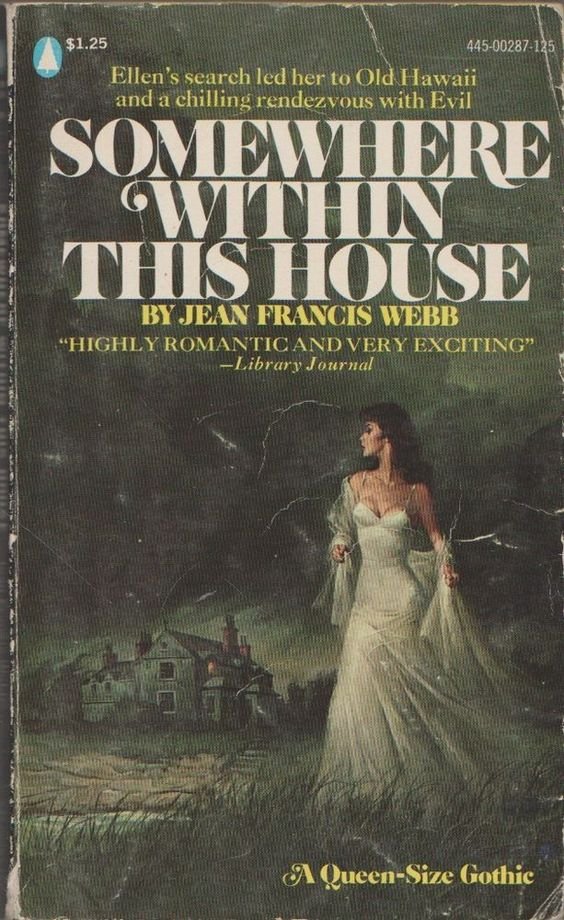
At #53: Castle Of Evil, by Sandra Abbott. Avon Gothic, 1974. More turrets than are strictly necessary here... 
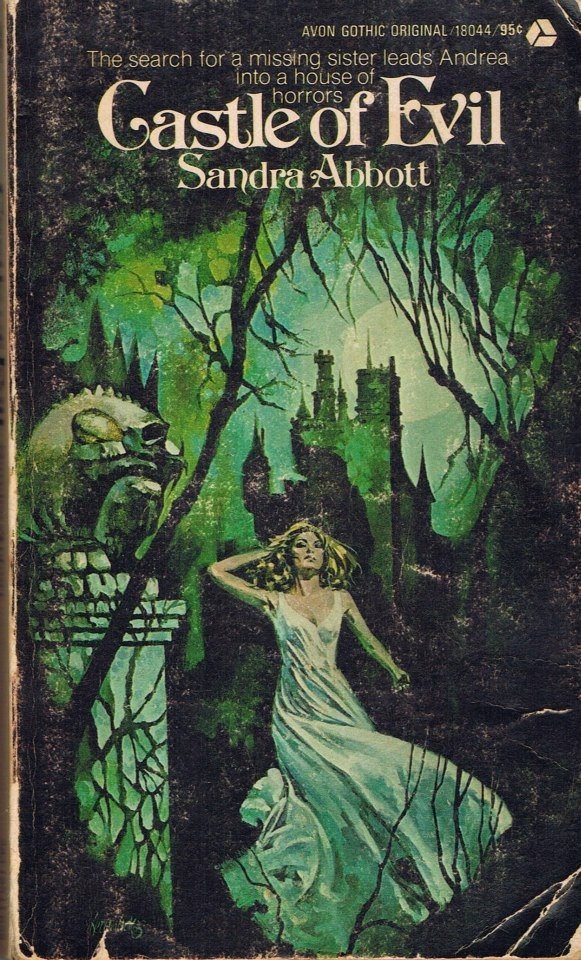
At #52: Flames Over The Castle, by Diane Lapoint. Ace Gothic, 1975. "Wine is the mirror of the heart." 
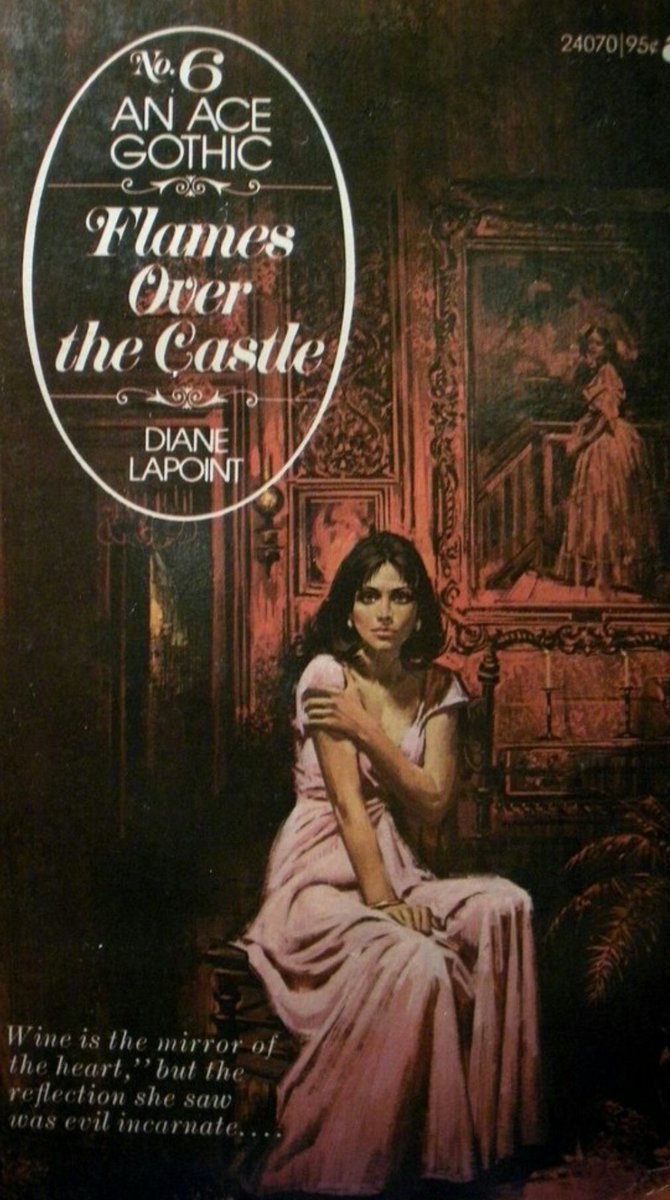
At #51: The Secret Of Awen Castle, by Florence Hurd. Avon Gothic, 1974. This is extremely gothic, like an early Cure video. 
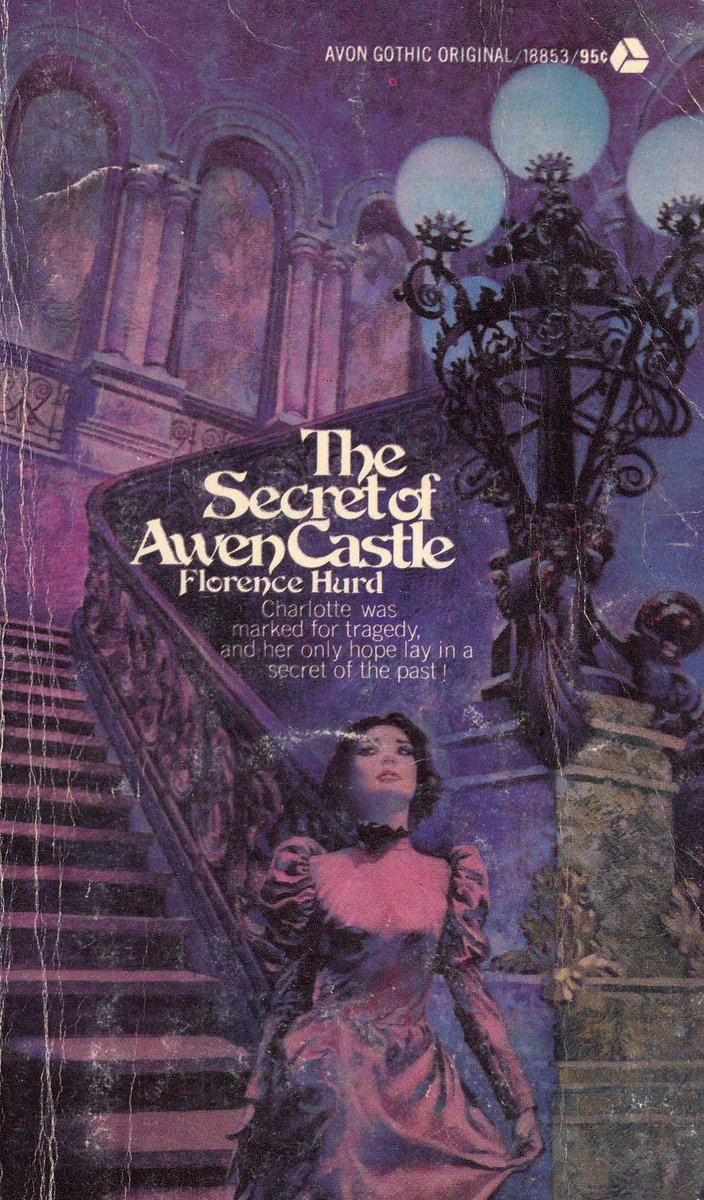
At #50: Caliban's Castle, by Paulette Warren. Berkley Medallion, 1976.
Ah yes, the gothic castles of New England…
Ah yes, the gothic castles of New England…

(Interlude: at the end of this thread I shall reveal the key secret of writing gothic romance. So stay tuned...) 
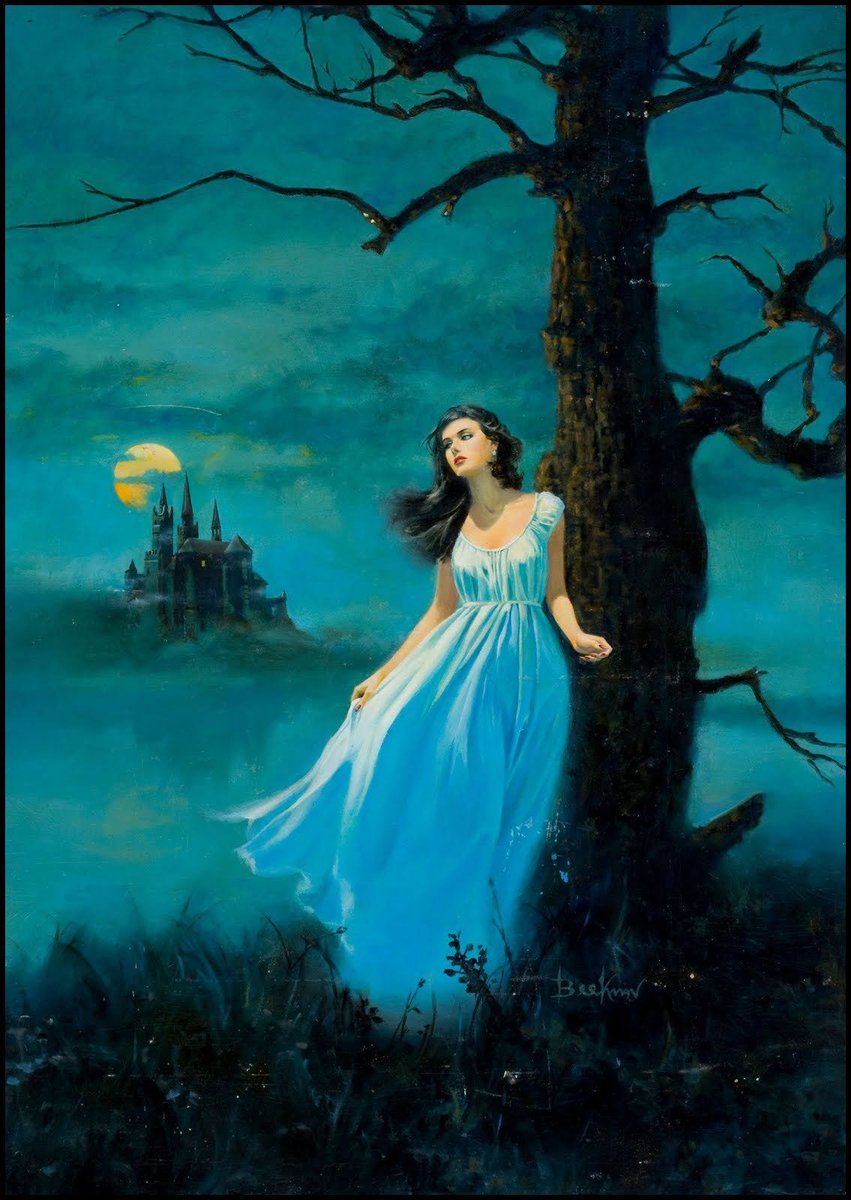
At #49: The Count Of Van Rheeden Castle, by Annjeanette Scott (A Queen-Size Gothic) Popular Library, 1976.
"Wielding the scepter of love" you say...
"Wielding the scepter of love" you say...
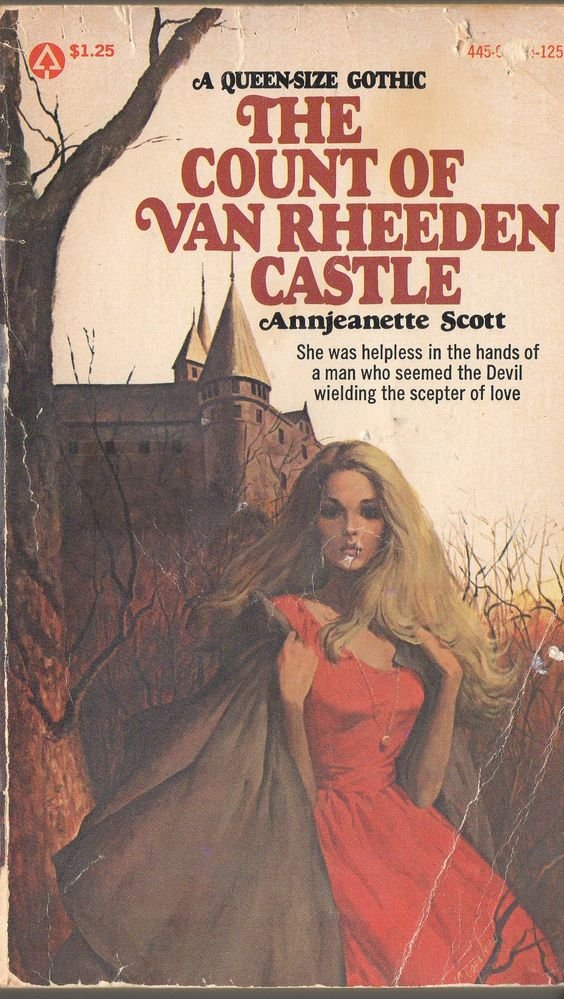
At #48: Heavy Heavy Hangs, by Doris Miles Disney. Ace, 1976. Women with great hair fleeing gothic mothers... 
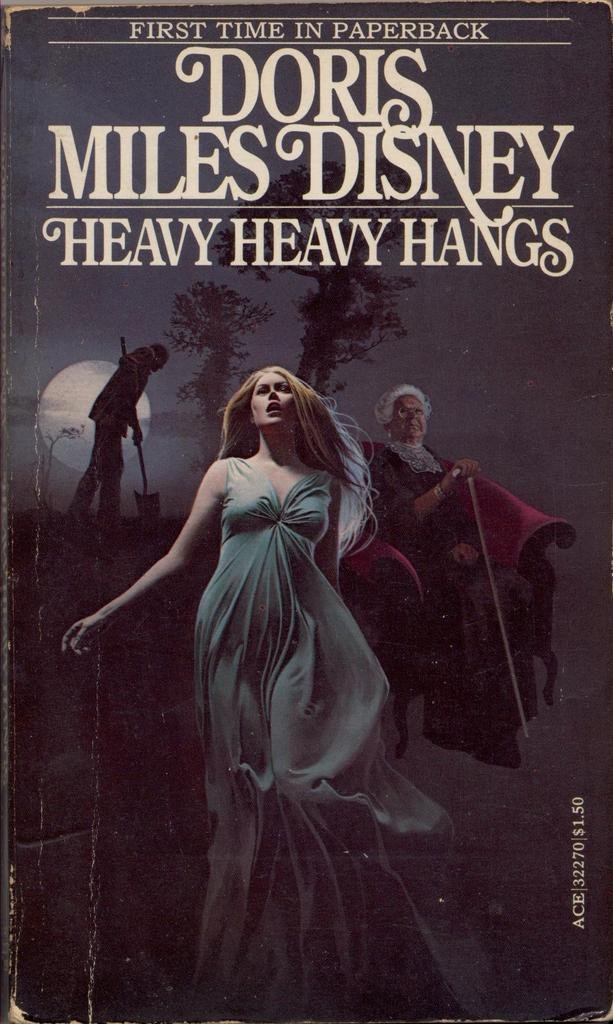
At #47: The Phantom Room by Elizabeth Erin Mande. Popular Library, 1971. That is a huge choker she's wearing. Are they meant to be that big? 

At #46: The Yesteryear Phantom, by W.E.D. Ross. Avon Gothic, 1974. Yellow is supposed to be the colour of the mind. 
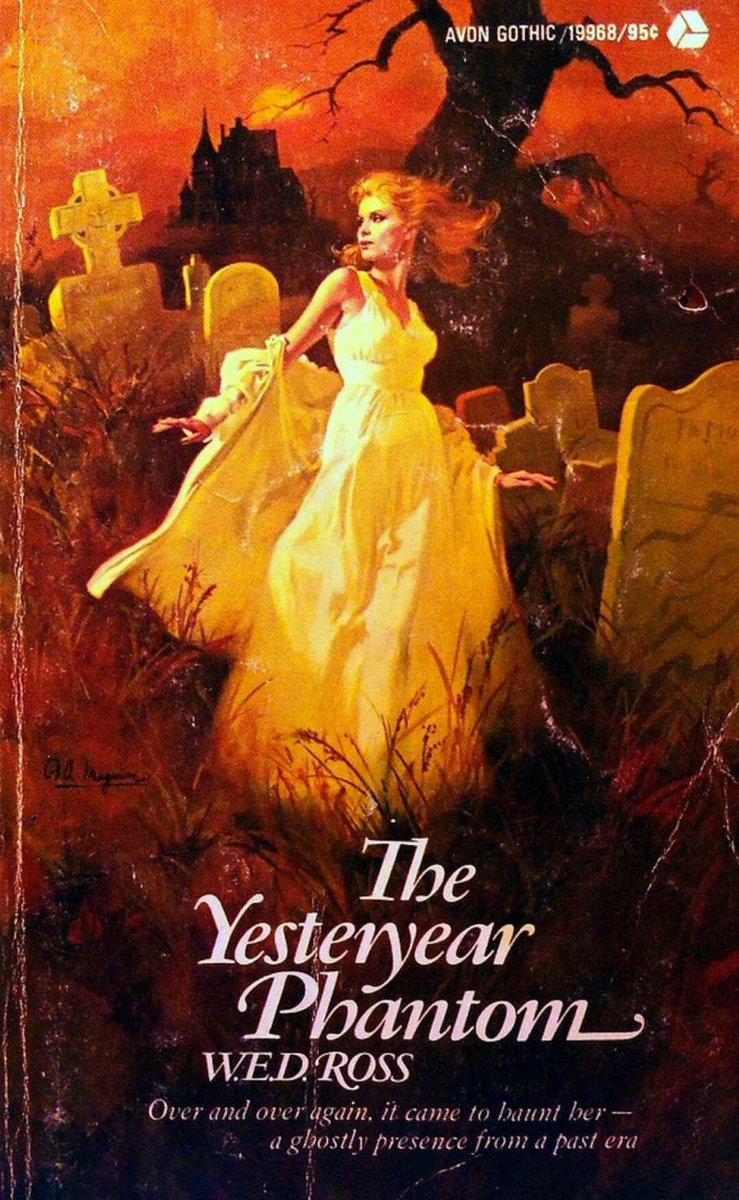
At #44: To The Castle, by Dorothy Malm. Ace Gothic, 1974. Not sure about the barefoot look, may step on a snail... or something worse! 
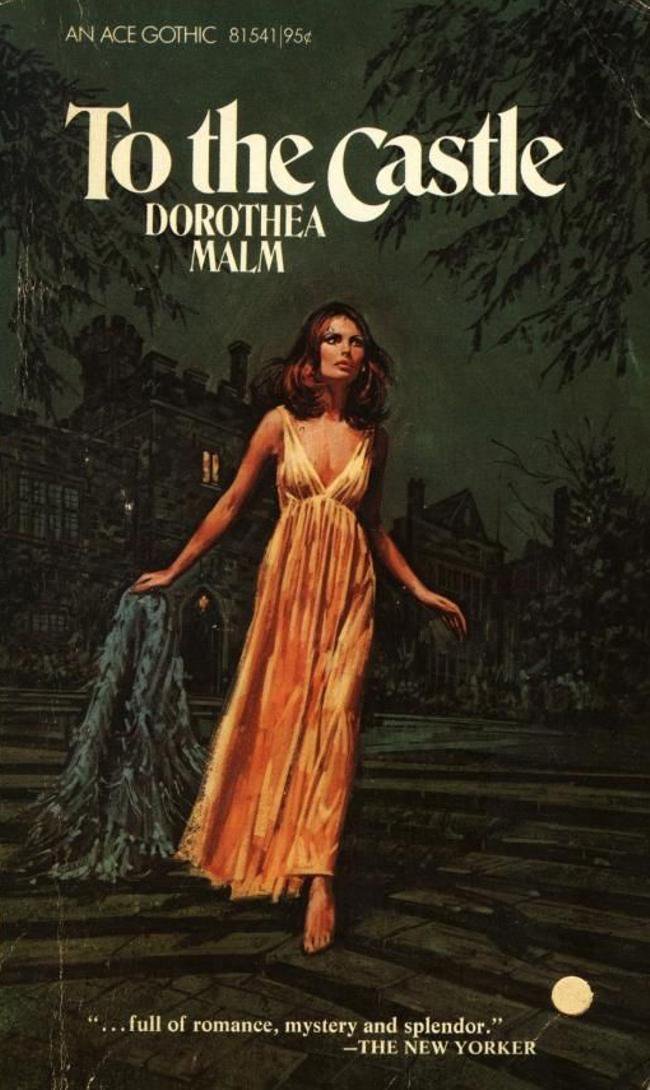
At #43: Nightmare In Eden, by Miriam Asher. Ravenswood Gothic, 1974. Cover by Elaine Duillo. How do you write 'unutterable terror'? 
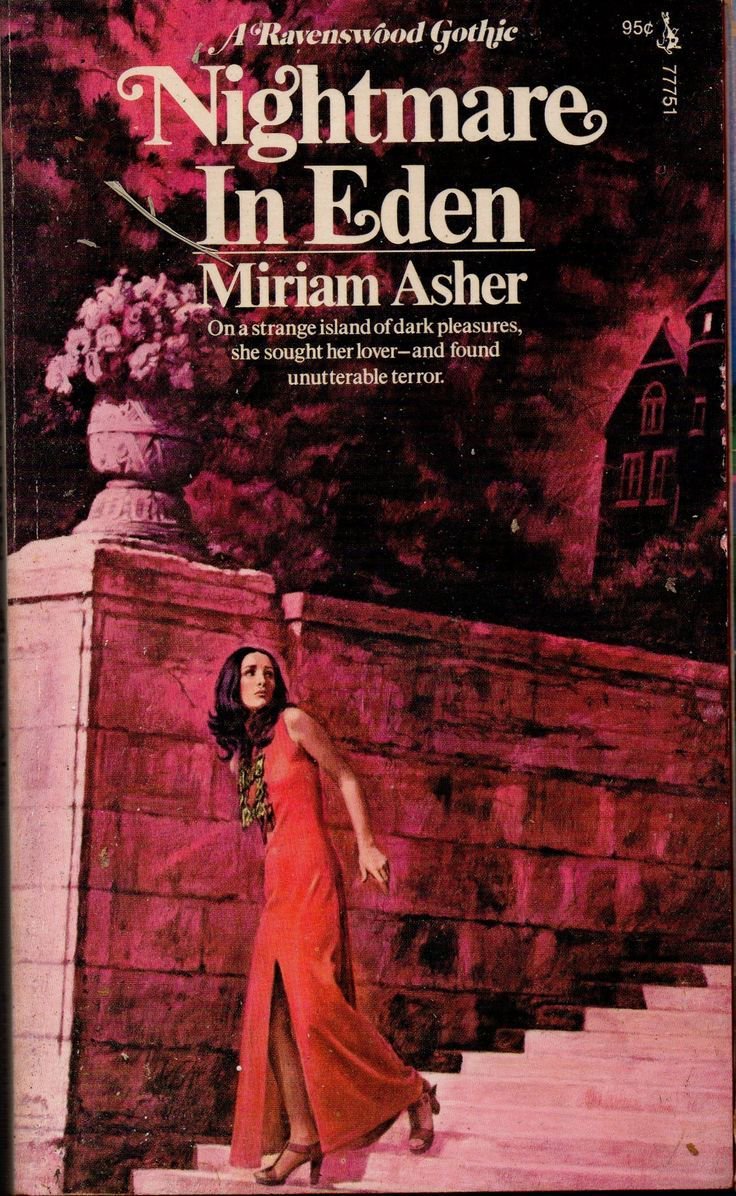
At #42: The Romany Curse, by Suzanne Somers. Belmont Tower, 1974. That is a long, long set of stairs. I pity the milkman. 

At #41: Curse of Deepwater by Christine Randell. Warner Gothic, 1974. Warner Books never really got into the gothic romance genre so these are quite nice to collect. 
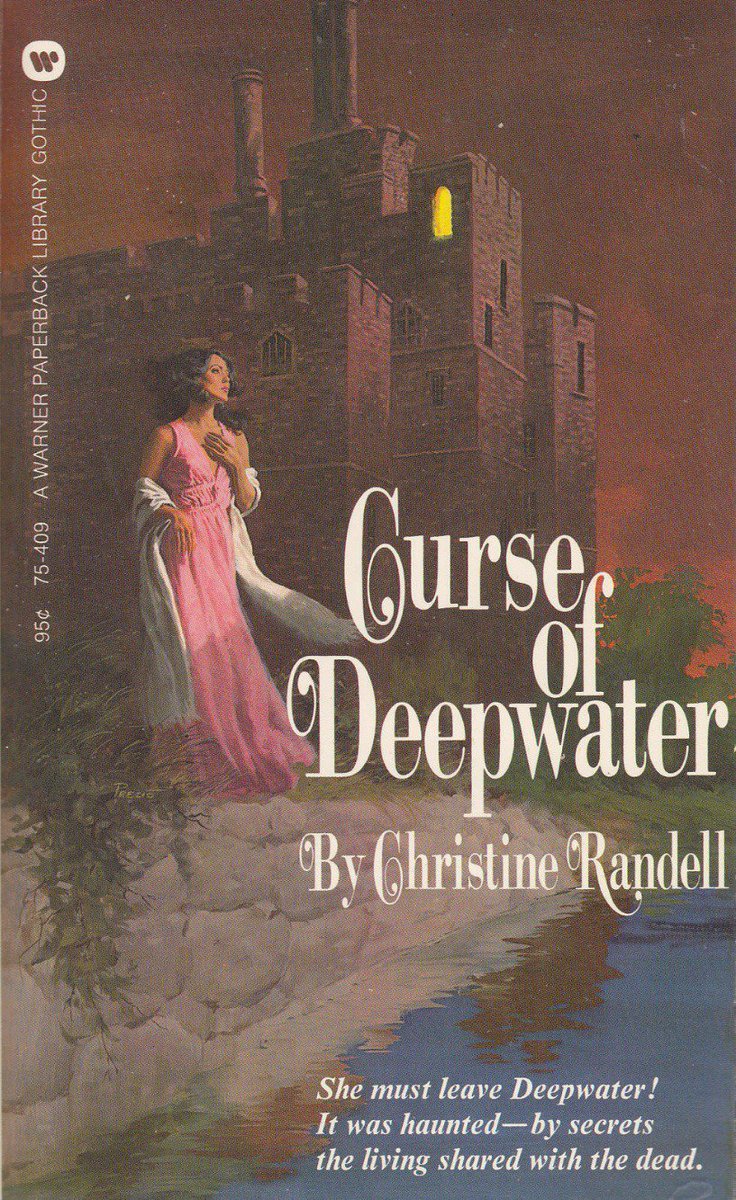
At #40: Dark Odyssey, by Florence Stevenson. Signet, 1974. I'm not sure about the composition on this one. I keep thinking the house needs to be taller and the text a bit lower down. 
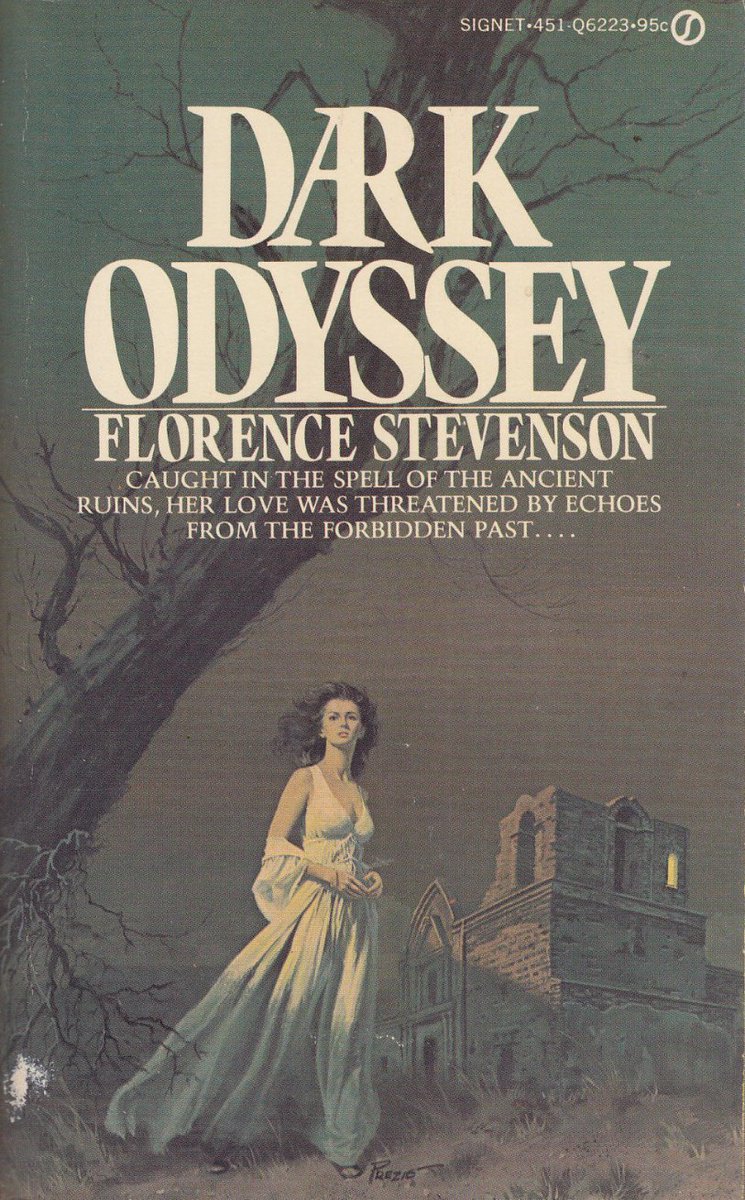
At #37: Red Wine Of Rapture, by Margaret Worth. Avon Satanic Gothic, 1977.
Tip: use the white wine of despondency to clean it up if it spills on the carpet.
Tip: use the white wine of despondency to clean it up if it spills on the carpet.

At #36: The Sorcerers, by Dorian Winslow. Avon Satanic Gothic, 1973.
This is basically a Cure video...
This is basically a Cure video...
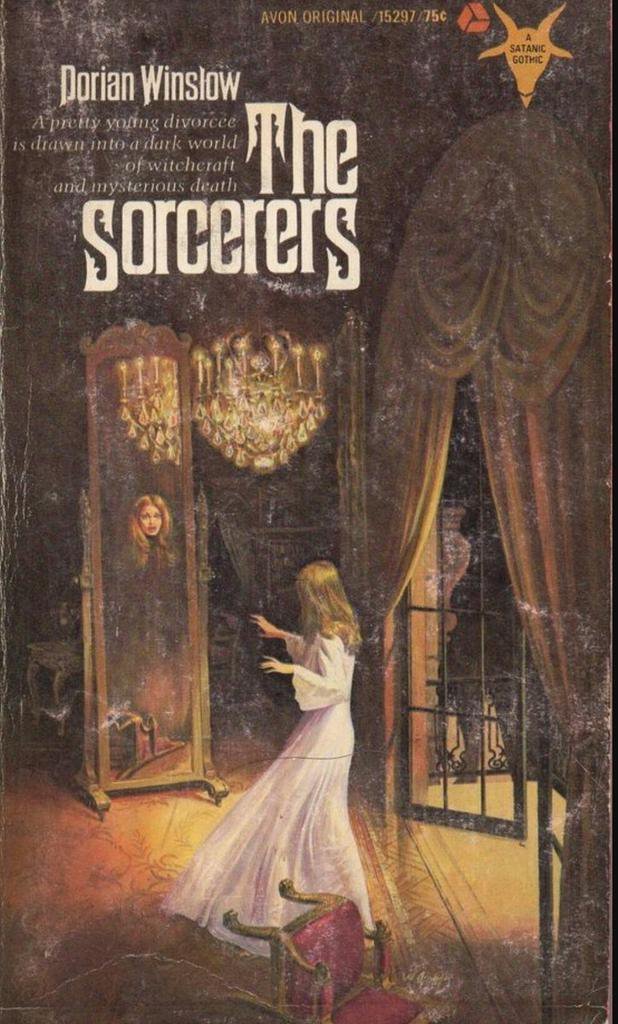
At #35: A Castle In Canada, by Caroline Farr. Signet Gothic, 1972. Canada has eight castles so feel free to flee any of them if you visit. 

At #33: Masquerade Of Evil, by Eva Zumwalt. Ace Gothic, 1975. This edition is part of the Ace Oval range, when they tried to standardise their cover design 

At #32: The Severing Line by Sara Cardiff. Fawcett Crest, 1975. I love a winter gothic cover: stark contrasts! 
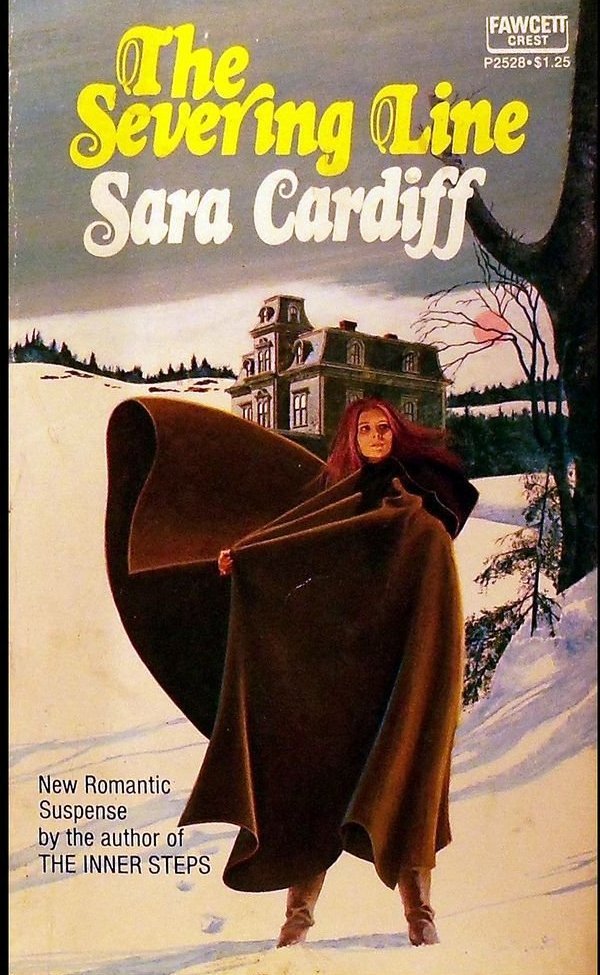
At #31: The Ides Of November, by Florence Stevenson. Signet Books, 1975. Set in a gothic theme park by the looks of it... 
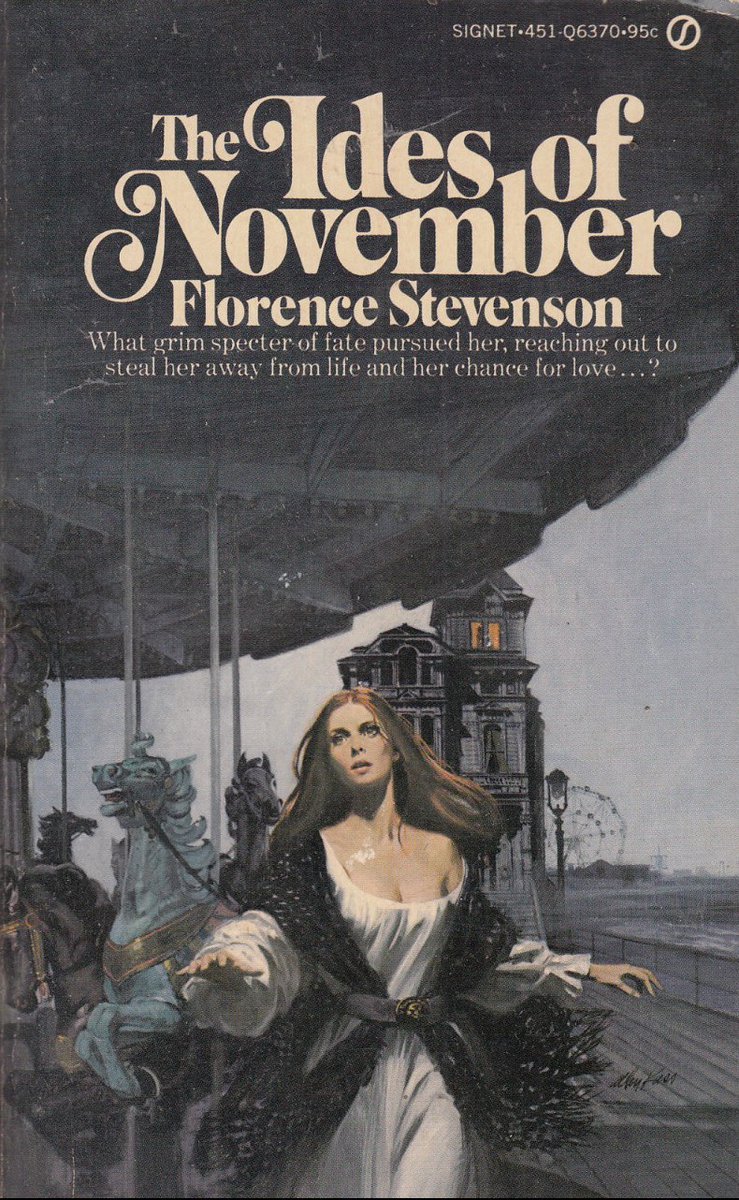
At #30: Web Of Days, by Helen Orr. Ace Gothic, 1975. Another Ace Oval and another winter gothic cover, with some excellent swirling cape action. 

At #29: When The Century Blooms, by June Wetherell. Avon Satanic Gothic, 1973.
Clutches bosom, breaks wind...
Clutches bosom, breaks wind...
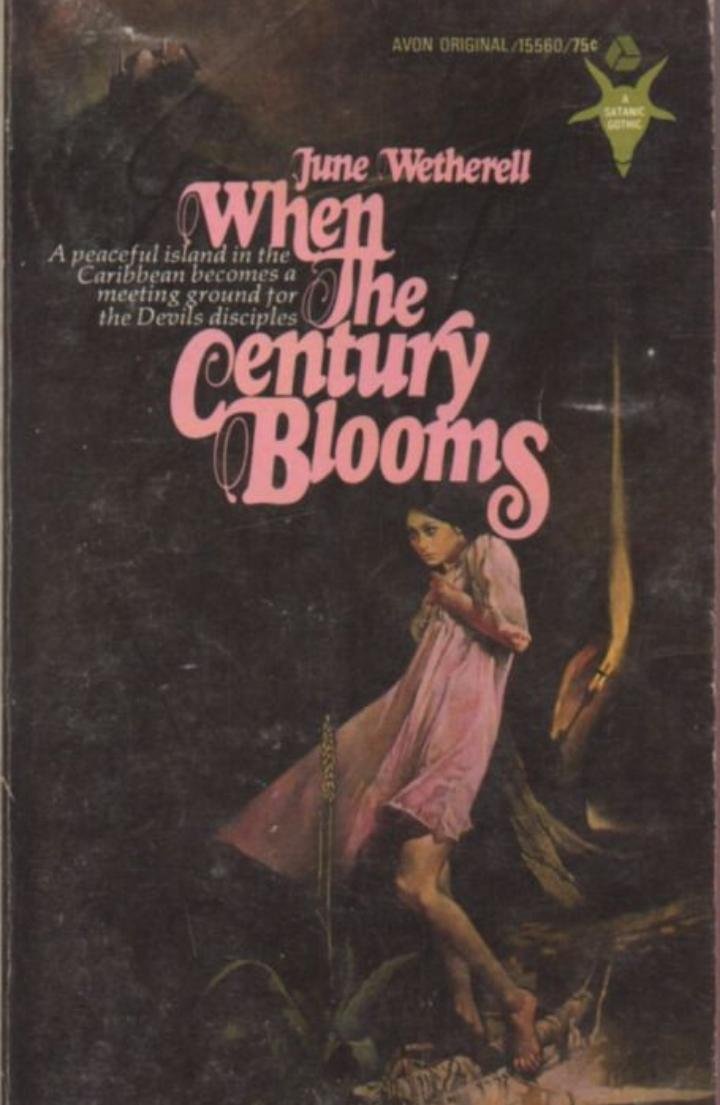
At #28: House Of Hate, by Dorothy Fletcher. Magnum Easy-Eye Gothic, 1967.
There were a few nurse pulp / gothic romance crossovers published but they never really caught on: different audiences with different expectations.
There were a few nurse pulp / gothic romance crossovers published but they never really caught on: different audiences with different expectations.
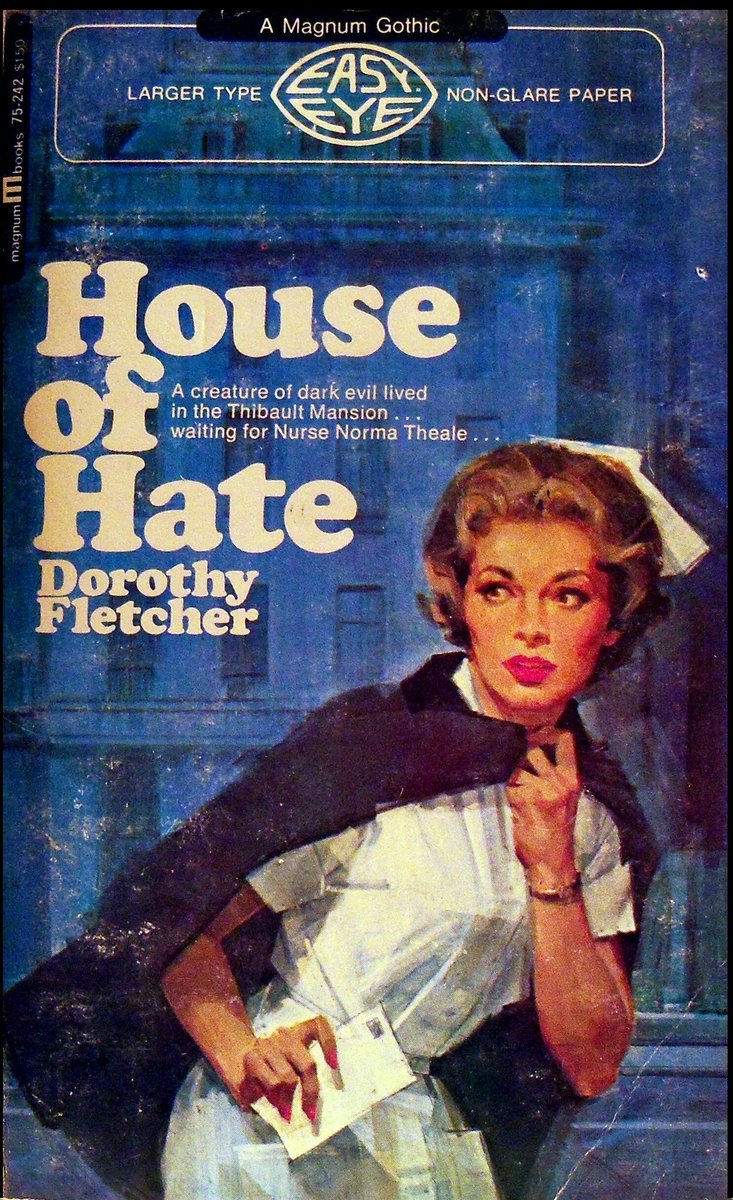
At #27: Glimpse Into Terror, by Clarissa Ross. Magnum Easy-Eye Gothic, 1971. There are surprisingly few gothic heroines with extra-sensory powers. Normally the heroine is grounded in the here-and-now world. 
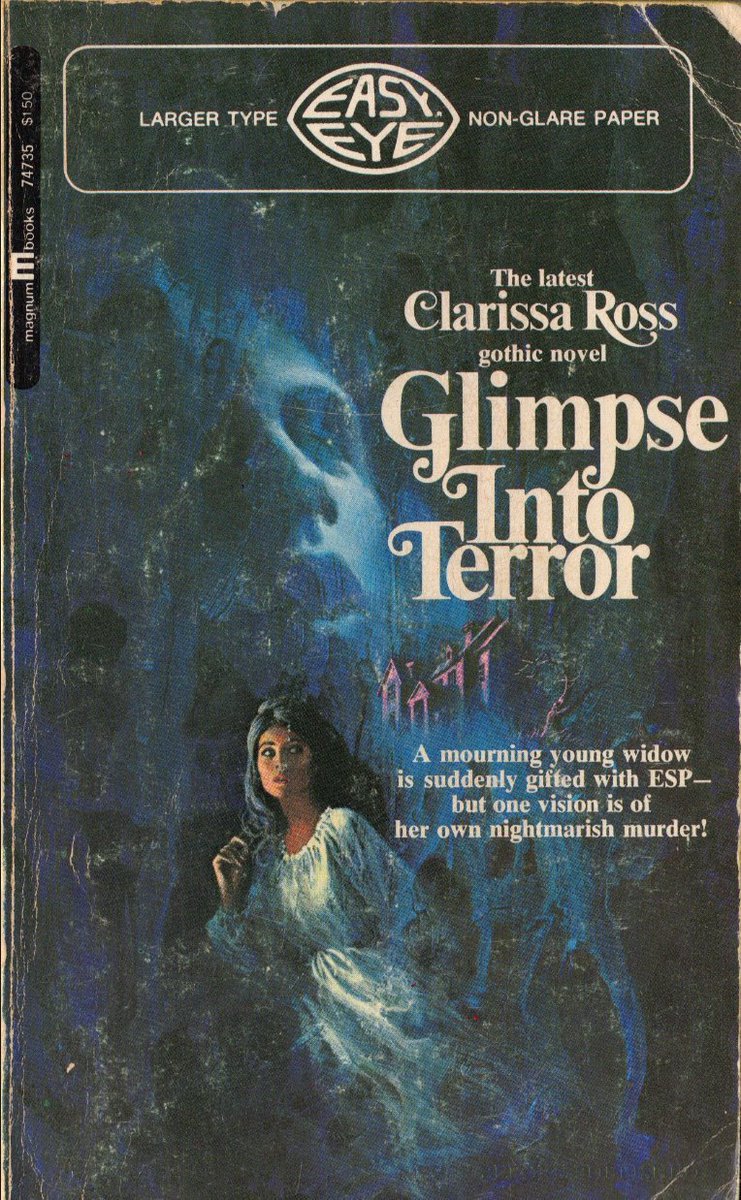
At #26: Castle Midnignt, by Evelyn McKenna. Magnum Easy-Eye Gothic, 1966. That is a horrible cover font! 
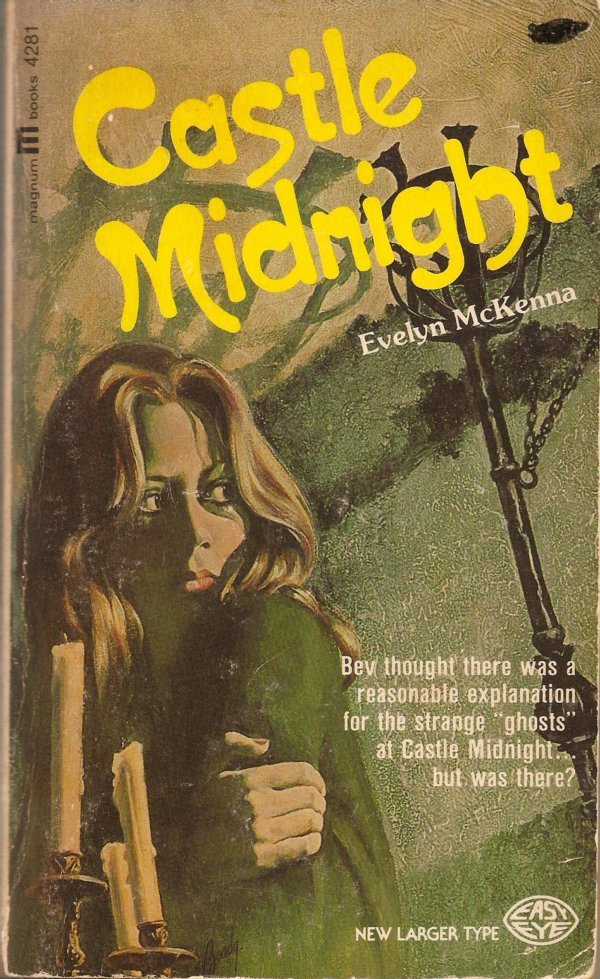
At #25: The Devil’s Daughter, by Marilyn Ross. Magnum Gothic, 1973. OK, I like this cover because it's silly. 
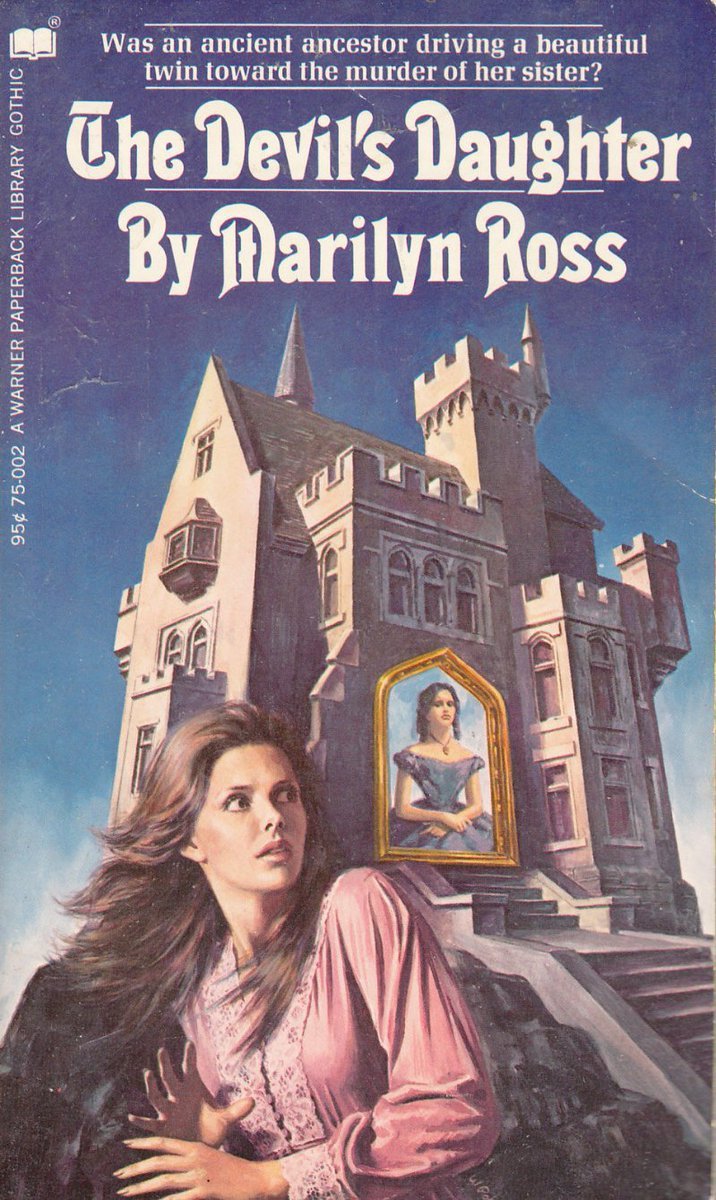
At #24: Secret Of The Pale Lover, by Clarissa Ross. Magnum Easy-Eye Gothic, 1969. 'Easy-Eye' is shorthand for large print on non-reflective paper, and is quite accessible for many readers. 
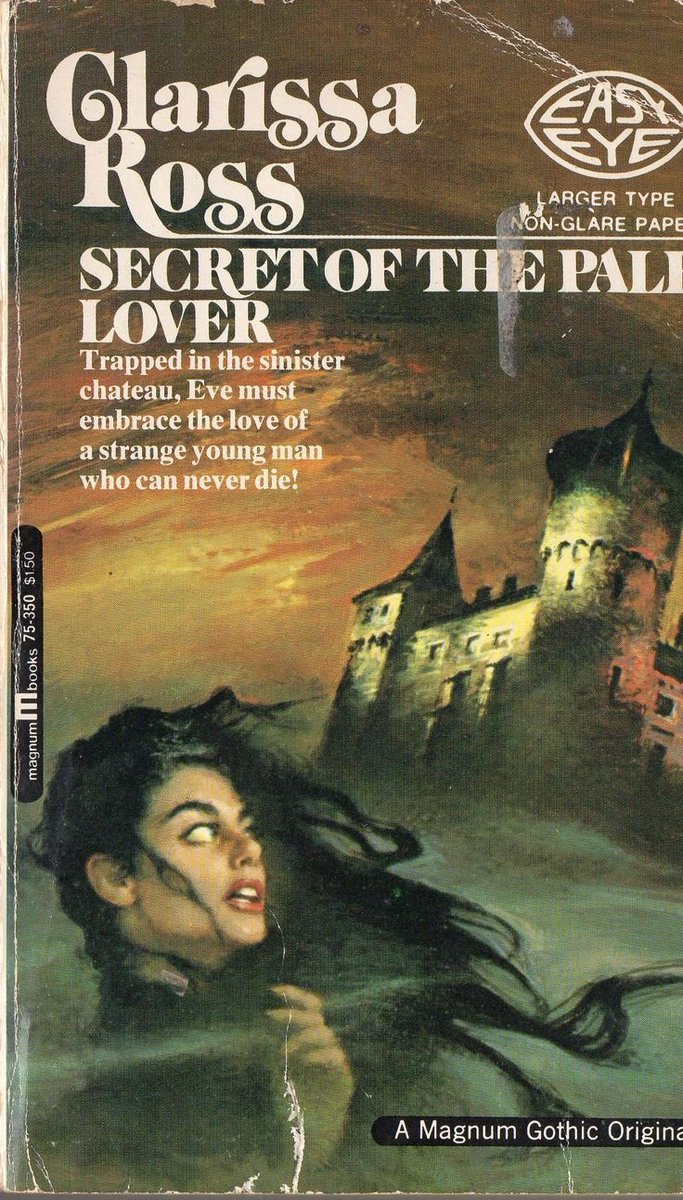
At #23: Best to wrap up warm when fleeing... Peril at Stone Hall, by Jane Corby. Magnum Gothic, 1969. That gown is very on-trend at the moment! 
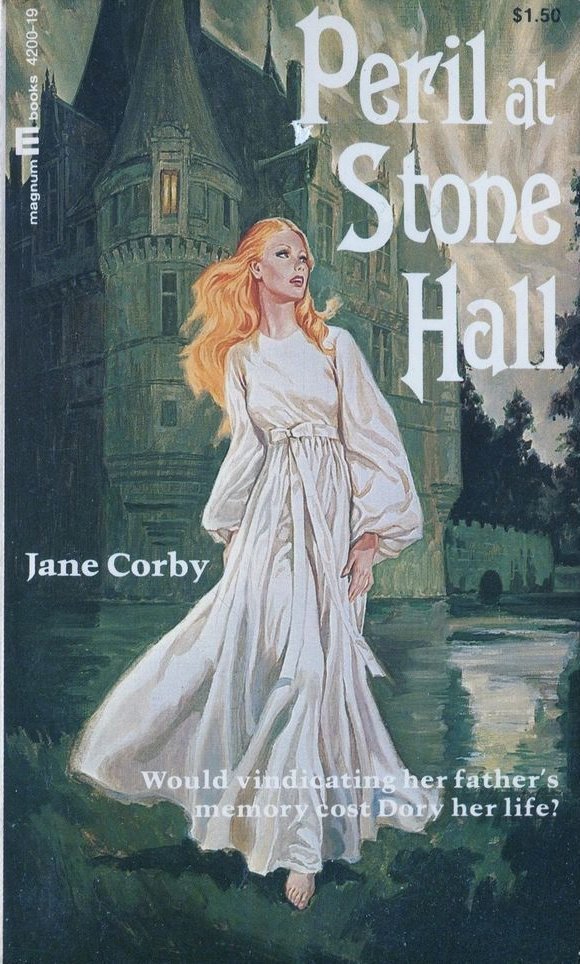
At #22: Lucifer Was Tall, by Elizabeth Gresham. Popular Library, 1976. A rare gothic set in a town house rather than a stand-alone mansion. 
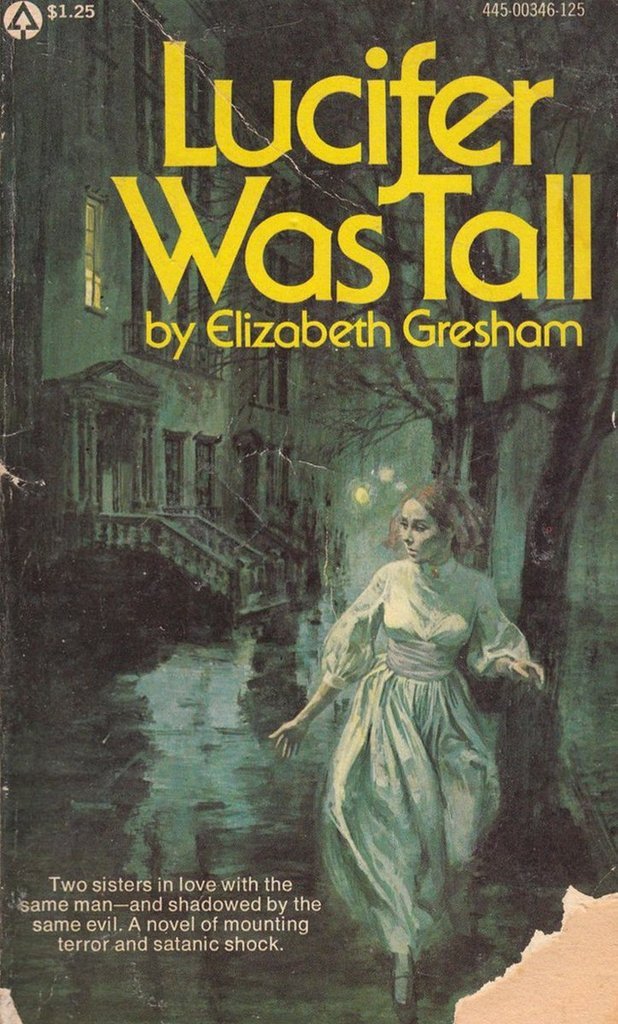
At #21: The Master Of Penrose, by Jane Aiken Hodge. Dell Books, 1968.
Retitling older stories was a cheap way for publishers to 'feed the beast' of gothic romance, but it didn't half annoy the readers...
Retitling older stories was a cheap way for publishers to 'feed the beast' of gothic romance, but it didn't half annoy the readers...
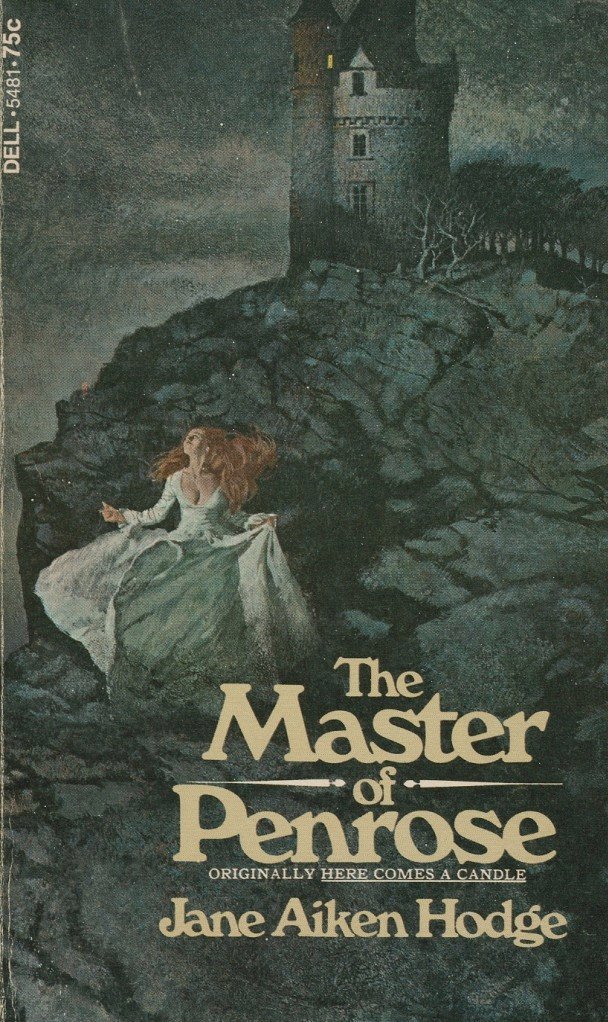
At #20: The Mists Of Memory, by Catherine Marchant. Lancer Books, 1965. Cover by Lou Marchetti. He always went for the 'Jackie O' style of heroine for the cover. 
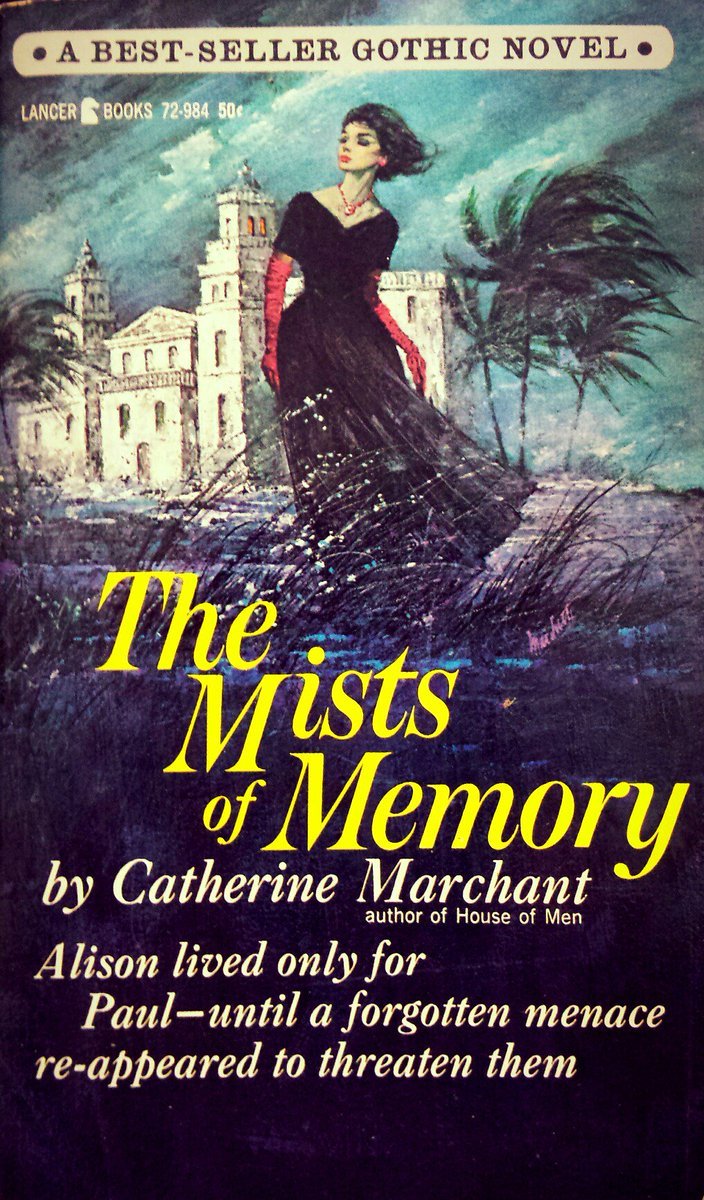
At #18: Ancient Evil, by Candace Arkham. Popular Library, 1977. Under her real name Alice Louise Ramirez she also wrote experimental lesbian S&M sci-fi for Essex Books. 
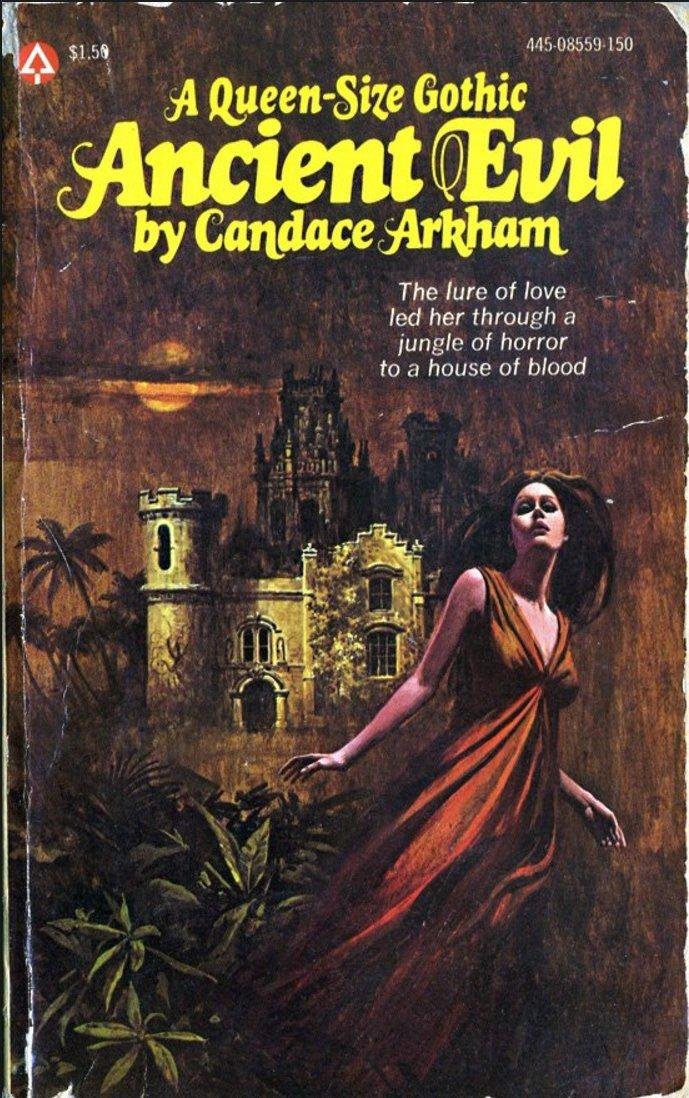
At #17: Black Candle, by Christine Randell. Paperback Library Gothic, 1968.
Alert readers may spot an issue with this cover image...
Alert readers may spot an issue with this cover image...
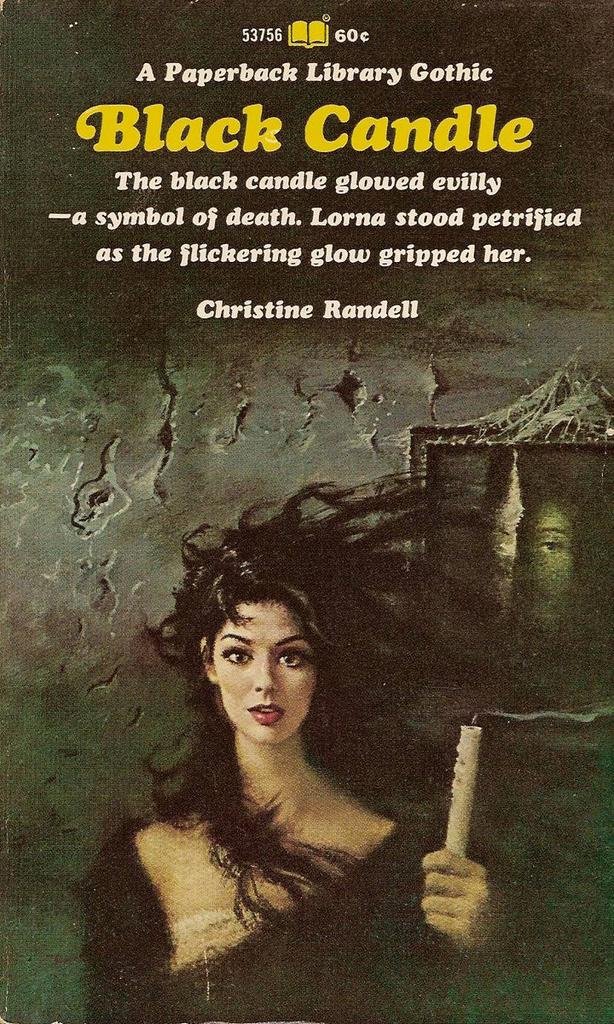
At #16: The Haunting of Drumroe, by Claudette Nicole. Fawcett Gold Medal, 1971. This is very Hammer Horror and I am here for that vibe. 
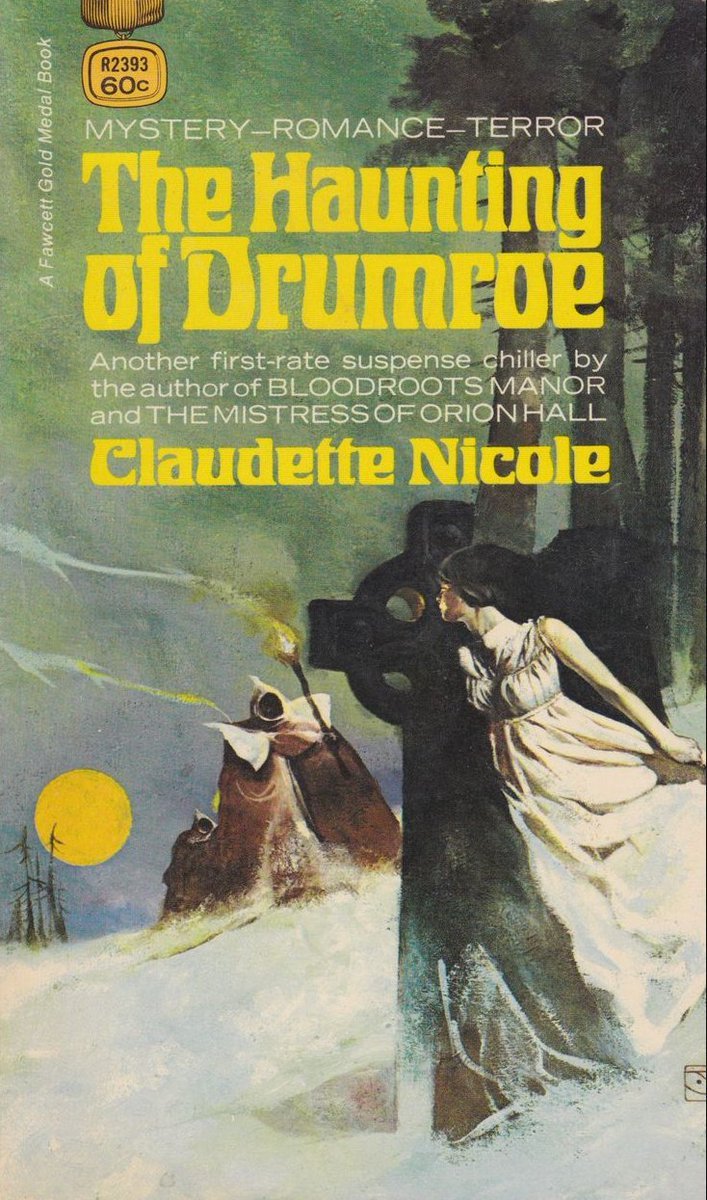
At #15: House Of Tombs by Caroline Farr / Tania by Teri Lester. Horwitz Gothic, 1977.
As these are both aliases of pulp legend Richard Wilkes-Hunter I'm guessing he was paid twice...
As these are both aliases of pulp legend Richard Wilkes-Hunter I'm guessing he was paid twice...
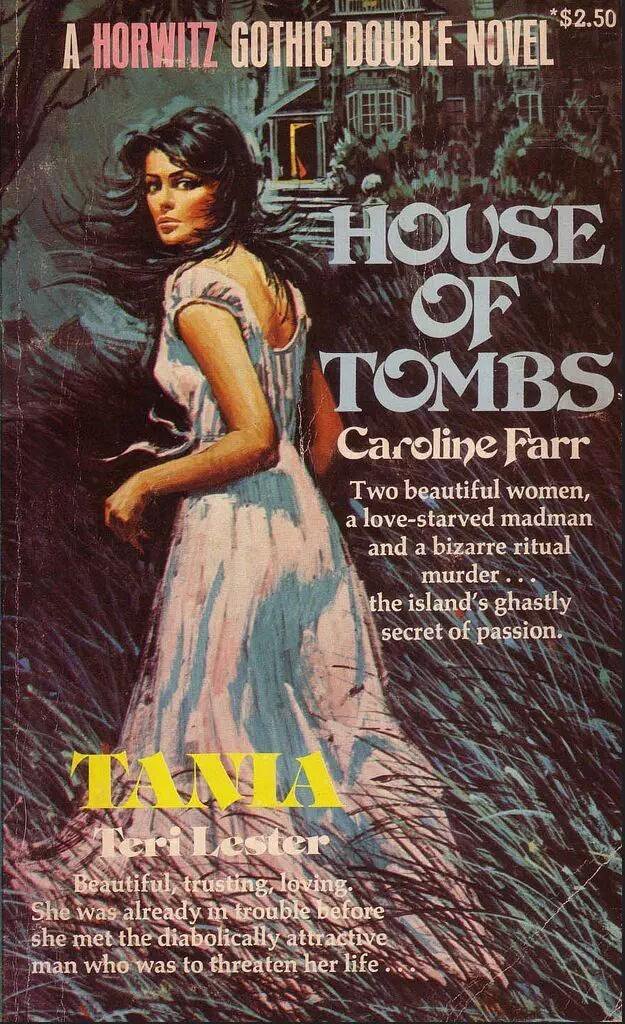
At #14: Dark Mansion, by Caroline Farr. Signet, 1974. Another beachfromt gothic, but with added blood... 

At #12: Home To The Night, by Julia Thatcher. Ballantine Gothic, 1976. There are of course 12 Zodiac Gothics to collect, but good luck tracking them all down - like pokemon they're often hard to find! 
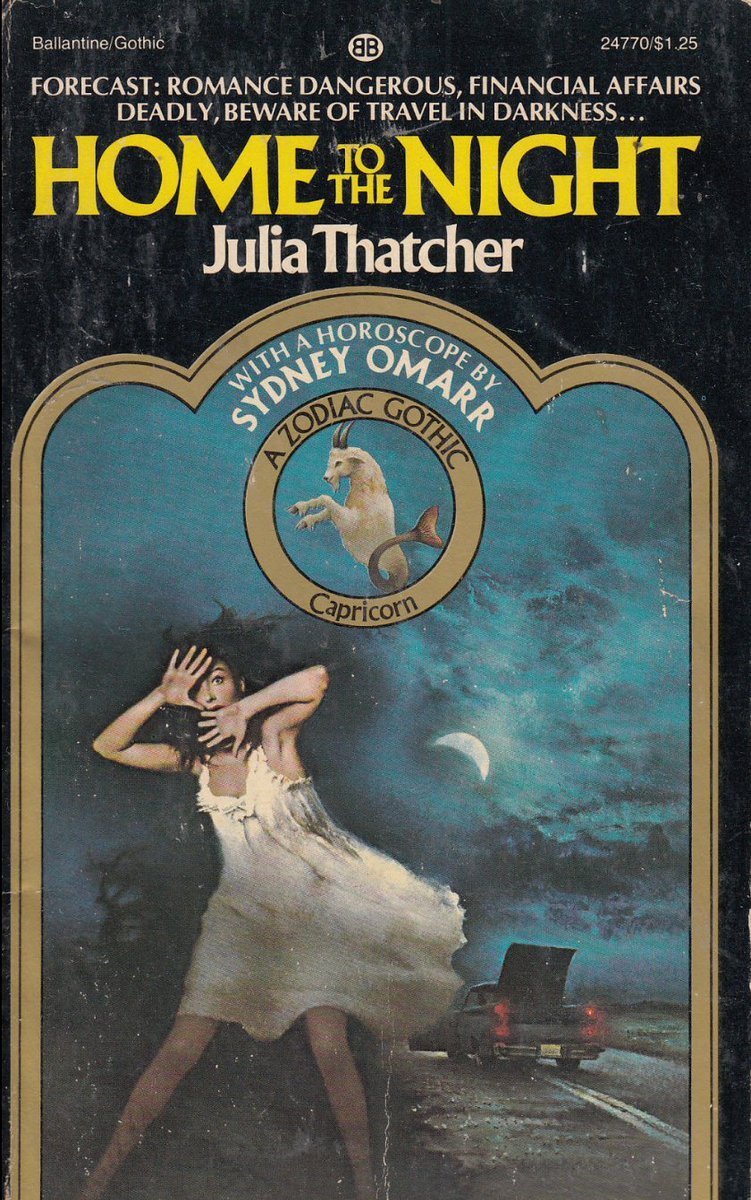
At #10: Dead By Now, by Margaret Erskine (aka Margaret Wetherby Williams). Ace Books, 1971. An unusual gothic romance / detective crossover series featuring Inspector Septimus Finch. The font is of course Peignot. 
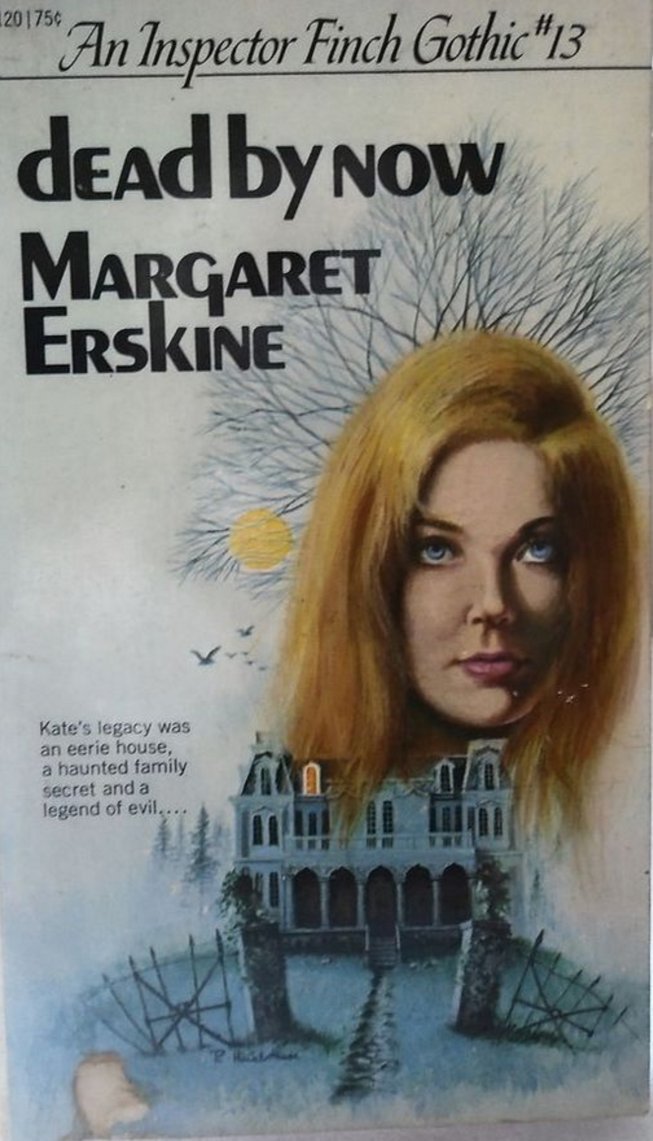
At #9: Hawthorne, by Ruth Wolff. Paperback Library Gothic, 1969. Cover by George Ziel. In the 1960s Ziel's style was instantly recognisable - long black dresses, bleak moorland and wind-tossed hair in the moonlight. 
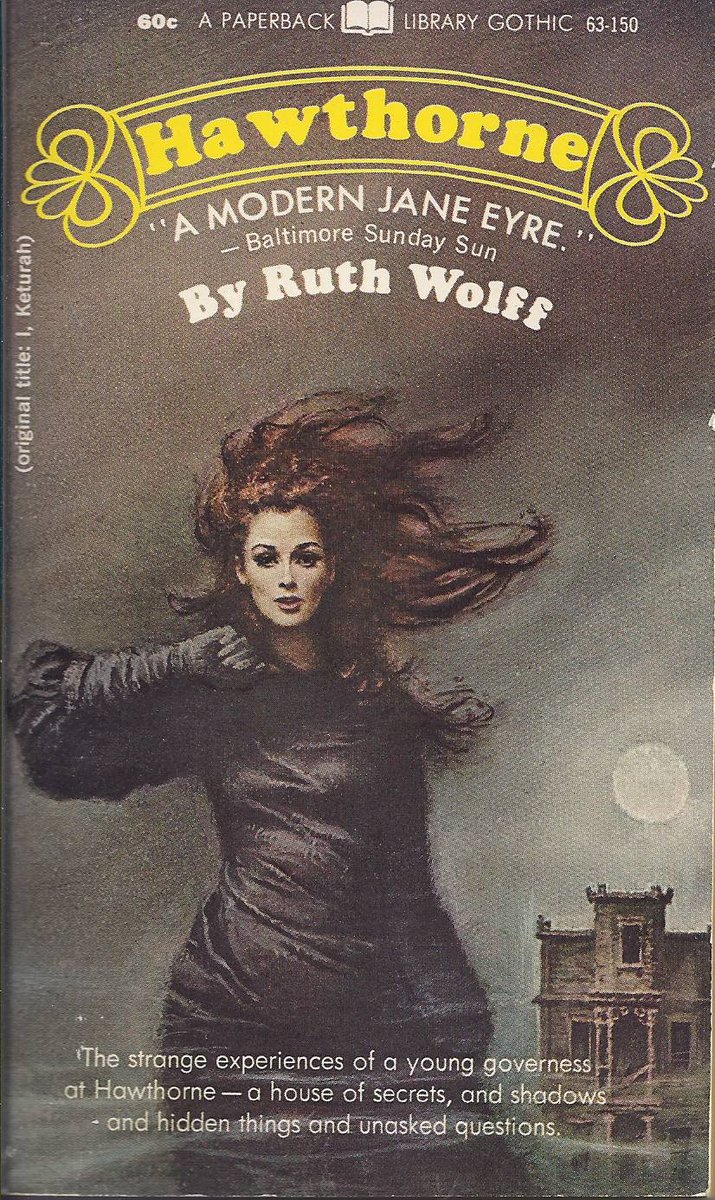
At #8: Daughter Of Darkness, by Edwina Noone (aka Michael Avallone). Signet Books, 1966. Cover by Allan Kass. Many men wrote gothic romance novels, but publishers preferred them to use a female nom de plume. 
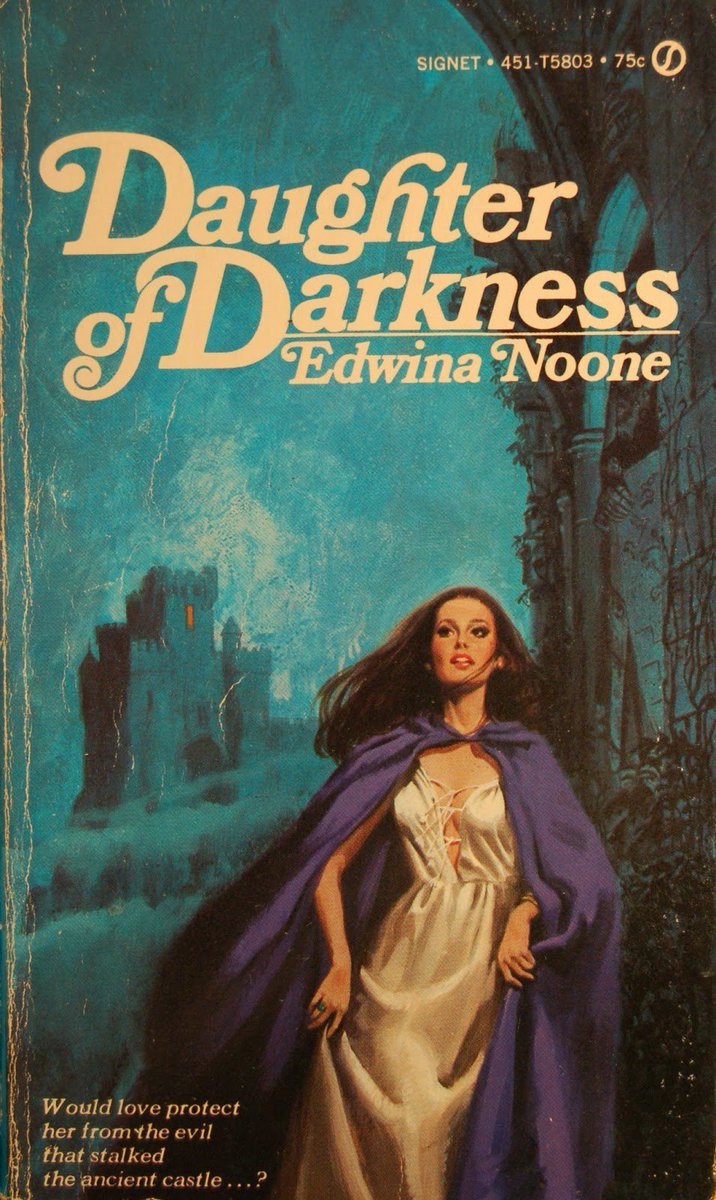
At #7: Legacy Of Terror, by Deanna Dwyer. Magnum Gothic, 1971. This was one of a number of gothic romances penned by horror writer Dean R Koontz. 
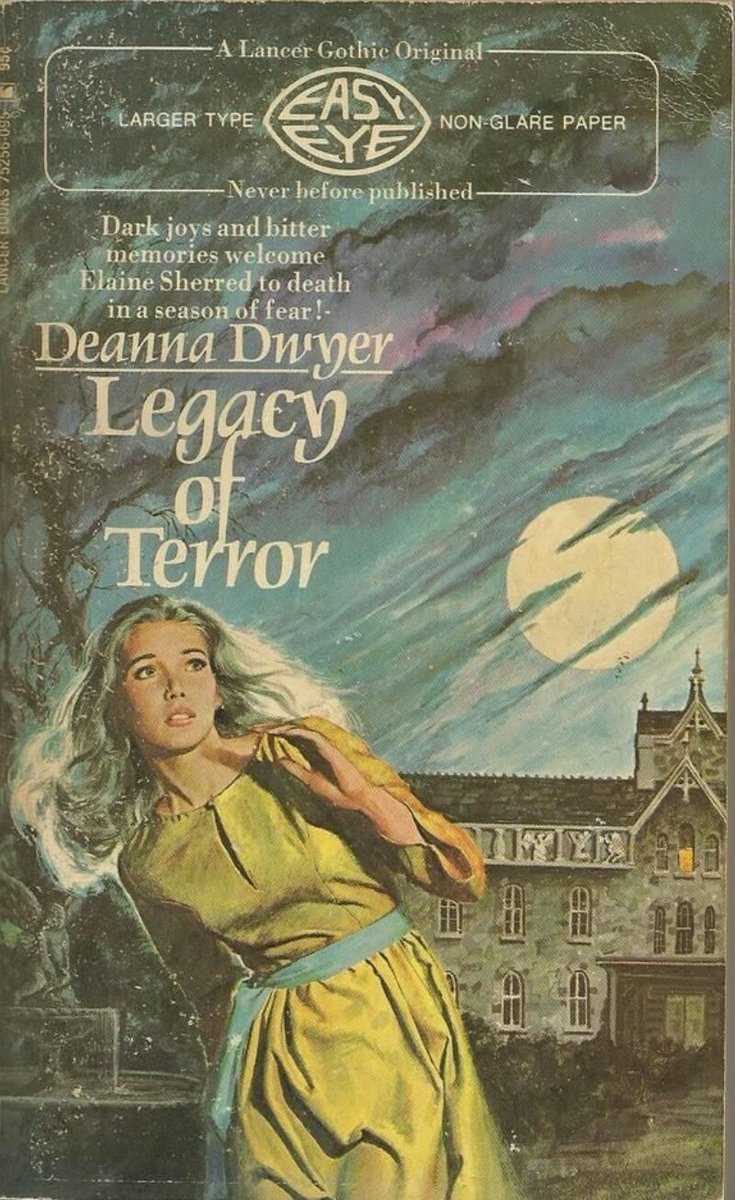
At #6: Joanne, The Unpredictable by Katheryn Kimbrough. Popular Library, 1976. Cover by Lou Marchetti. There would eventually be 40 novels in the Phenwick Women series. 
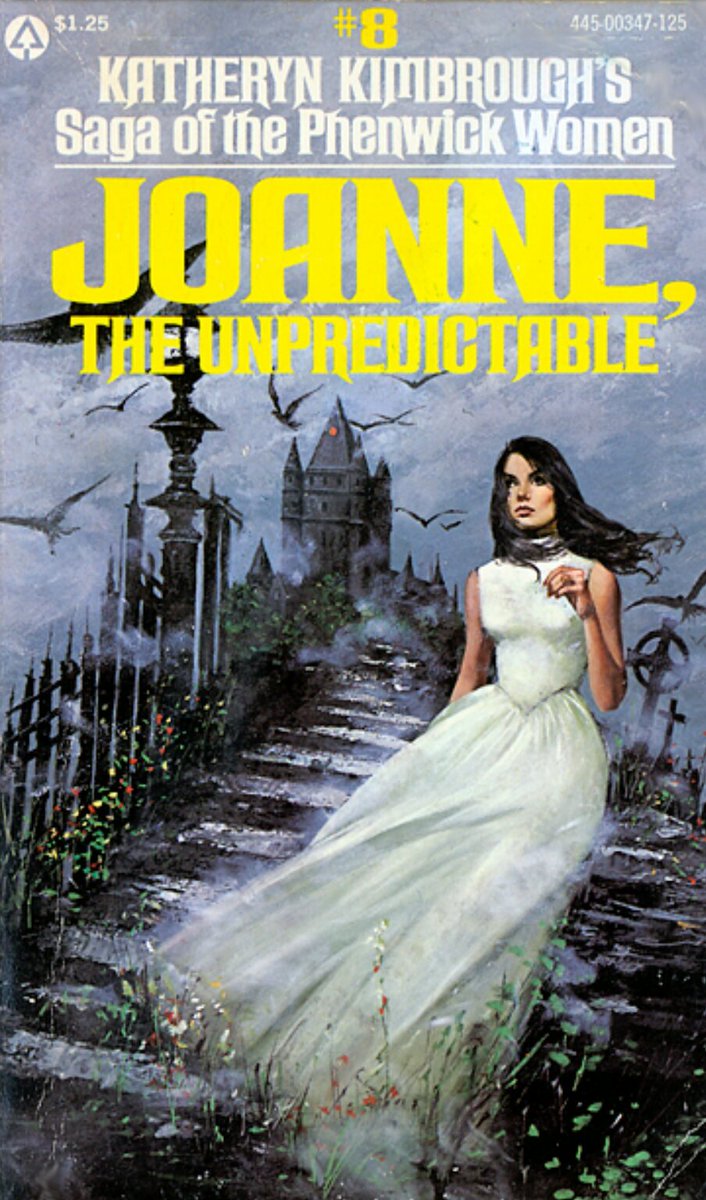
At #5: Widow In White, by Evelyn Bond. Ace, 1973. Cover by Walter Popp. This is classic Popp: great use of perspective and a knack of suggesting movement - especially in big dresses! 

At #4: The Poisoned Anemones, by Ursula Sanford. Ravenswood Gothic, 1974. The fish are an odd but charming touch. 

And at #1: All Your Lovely Words Are Spoken, by Mary Linn Roby. Ace Gothic, 1973. A personal favoutite. 
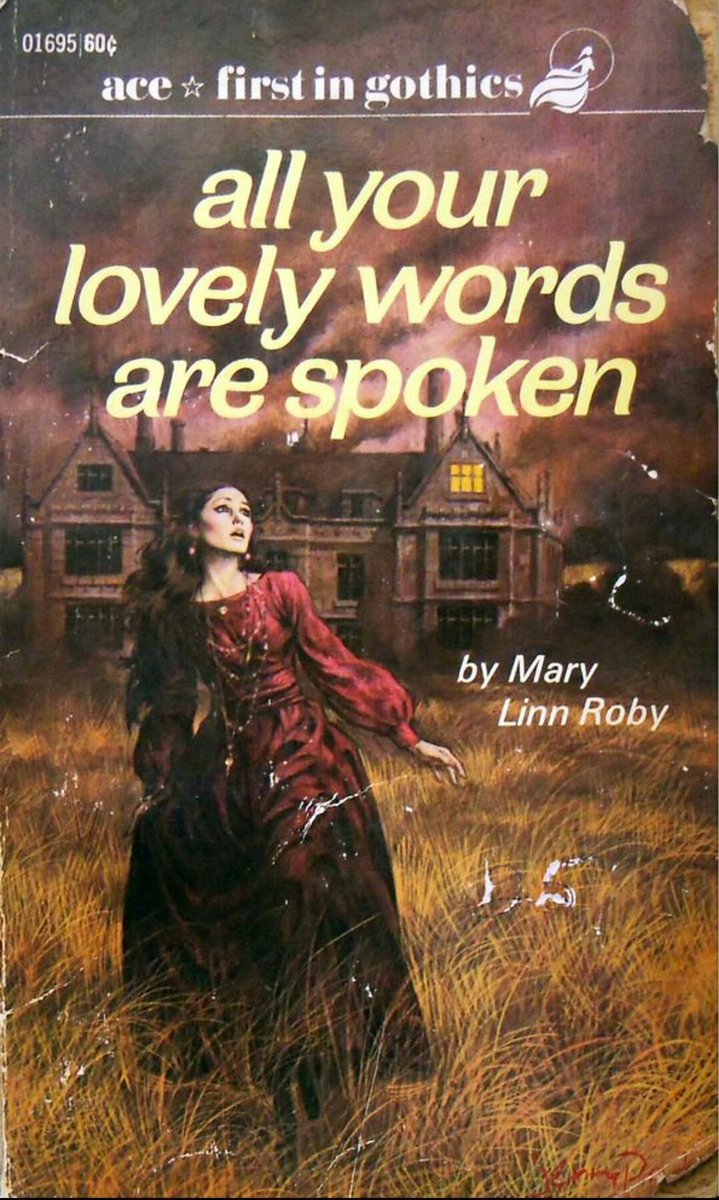
Apologies if you feel I've spammed your feed today. I promise never to do it again and fully understand if you wish to mute me in future. You have better things to spend your time on.
But before you go I promised to share with you the secret of gothic romance...
But before you go I promised to share with you the secret of gothic romance...
It is sometimes possible to feel enormous dread, and great pity, for the same person at the same time. And if you care for this person too, then that feeling may well unmoor your soul. That is the secret of the gothic.
Mind how you flee...
Mind how you flee...
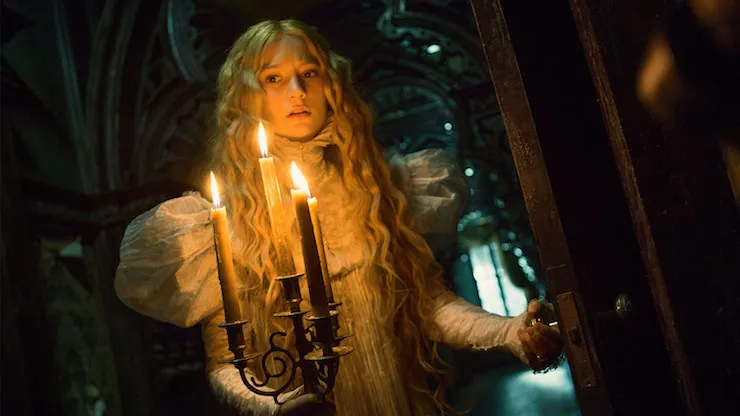
• • •
Missing some Tweet in this thread? You can try to
force a refresh

